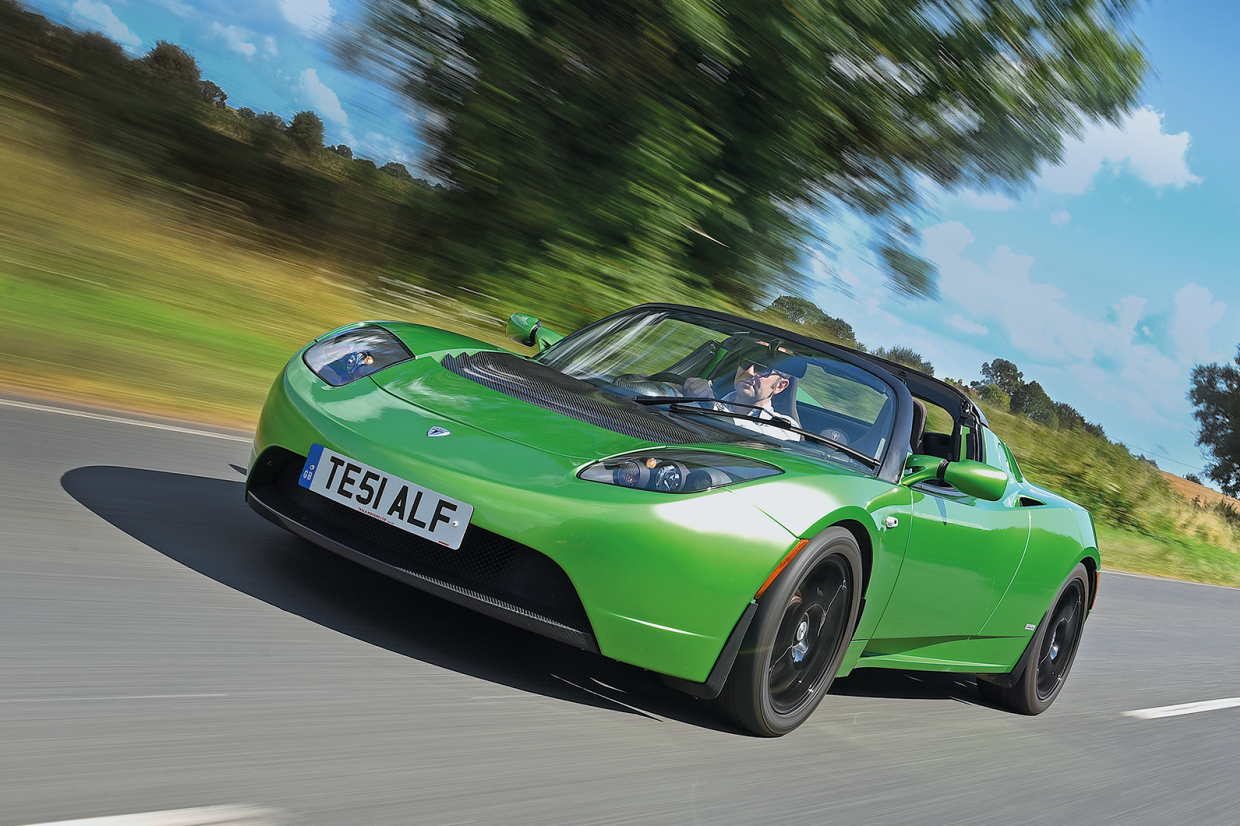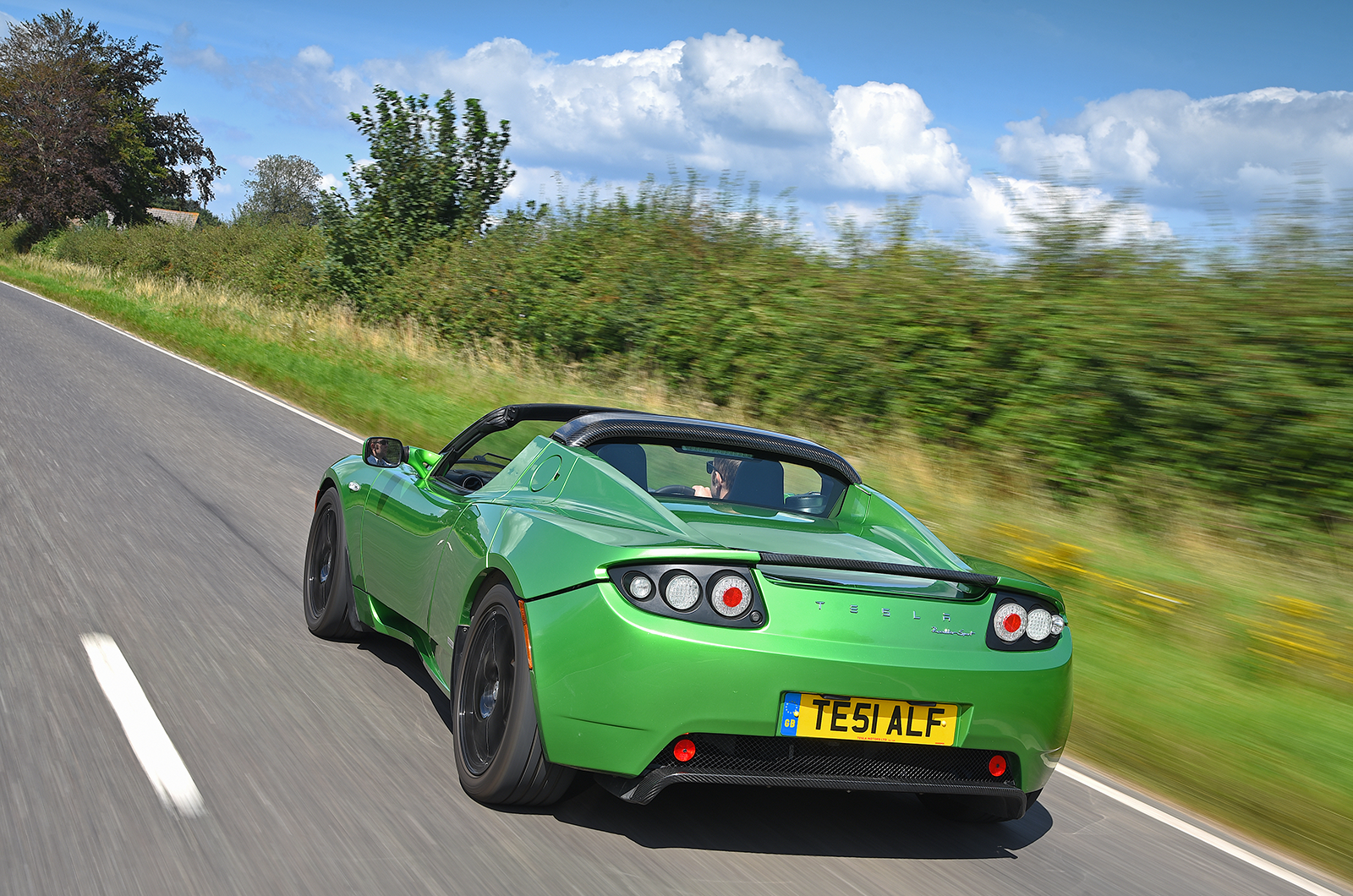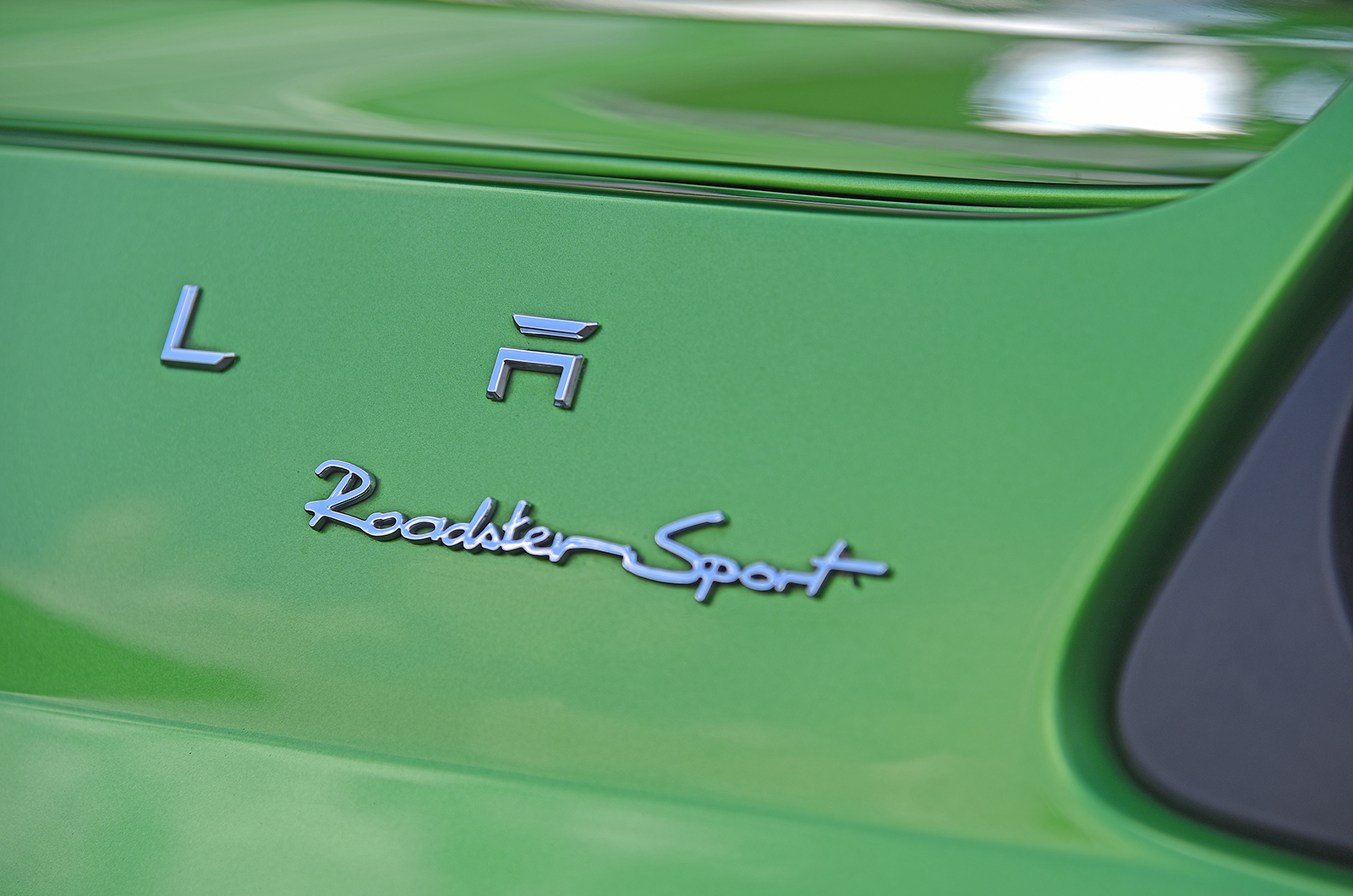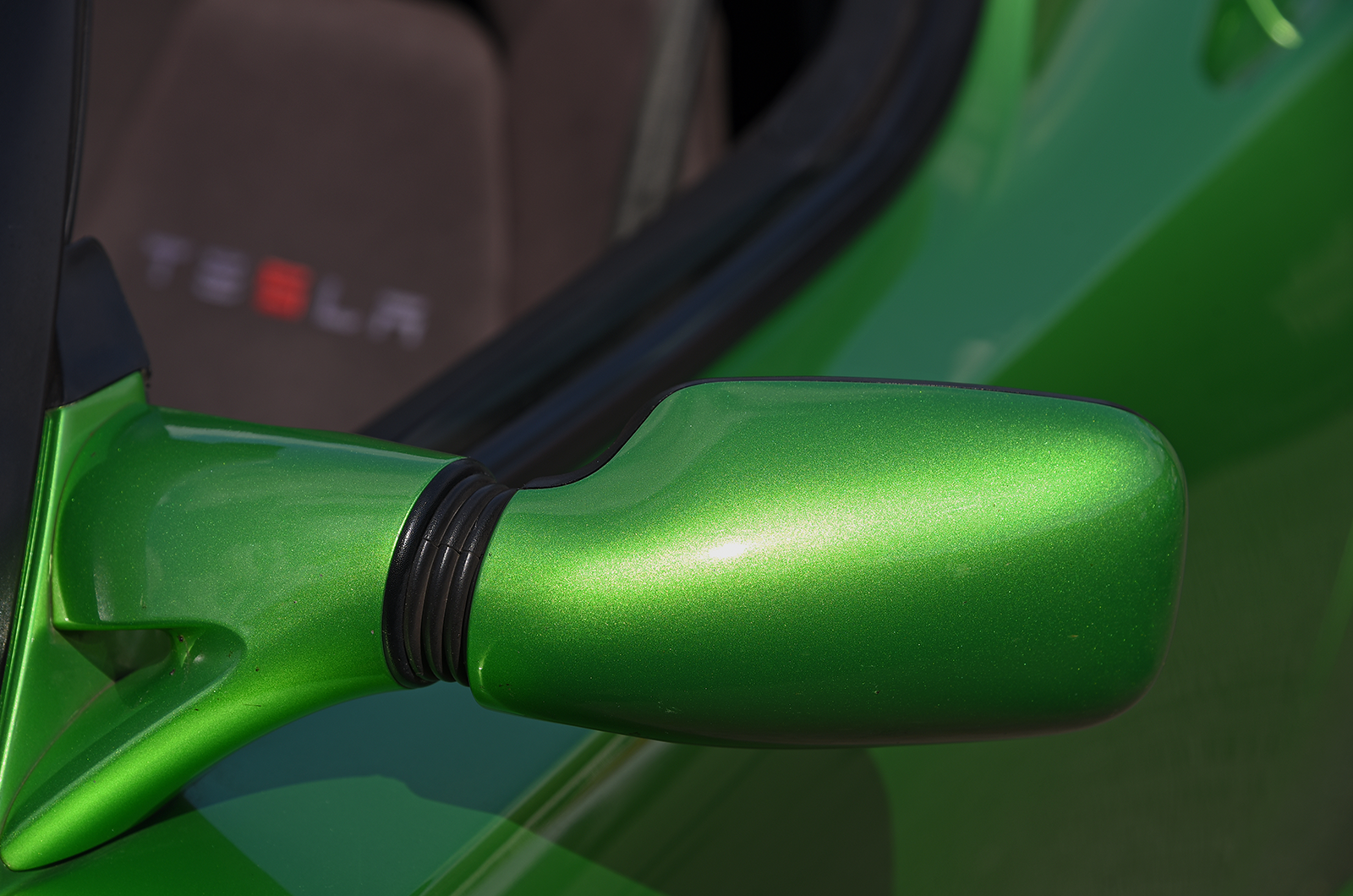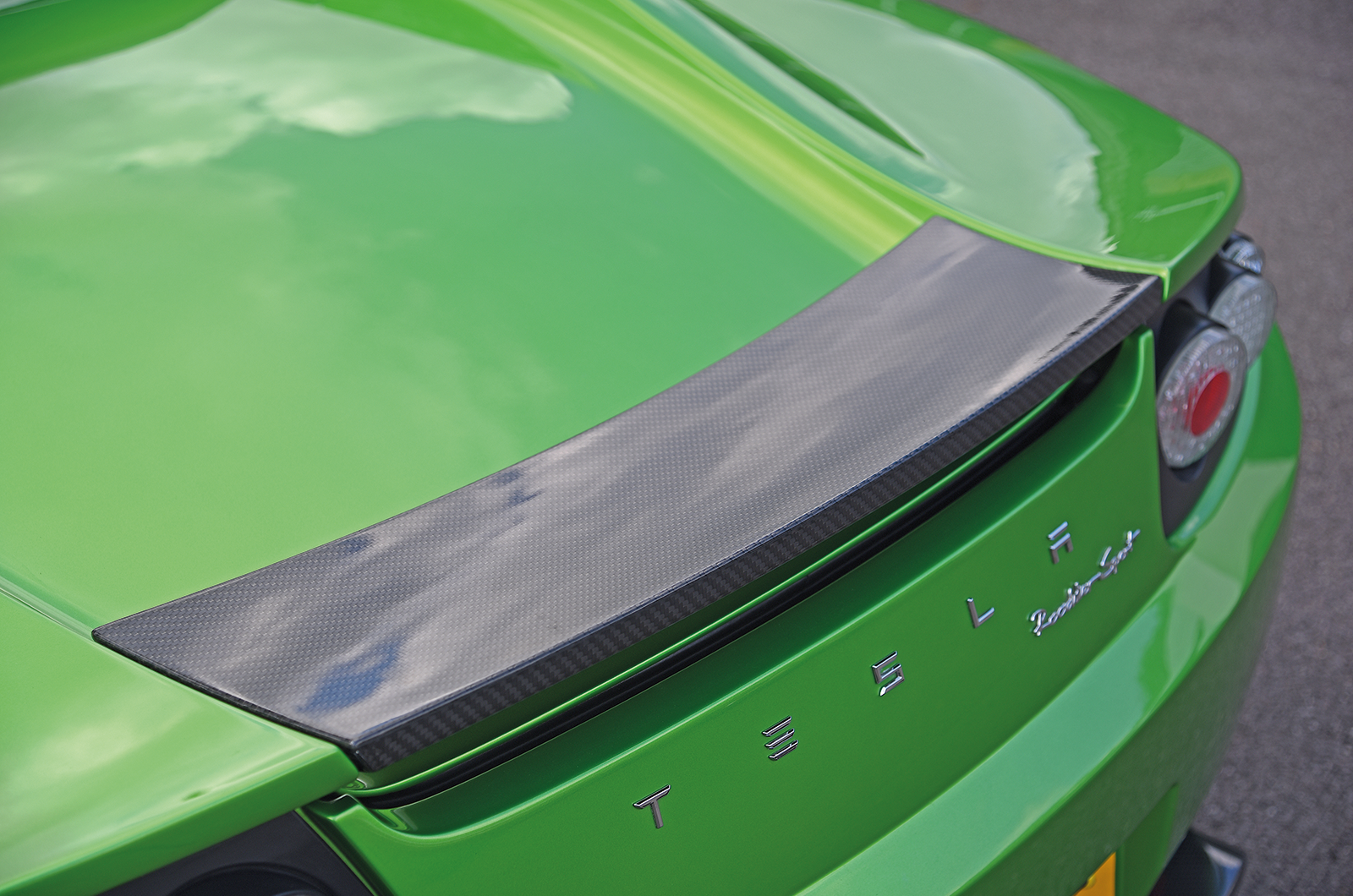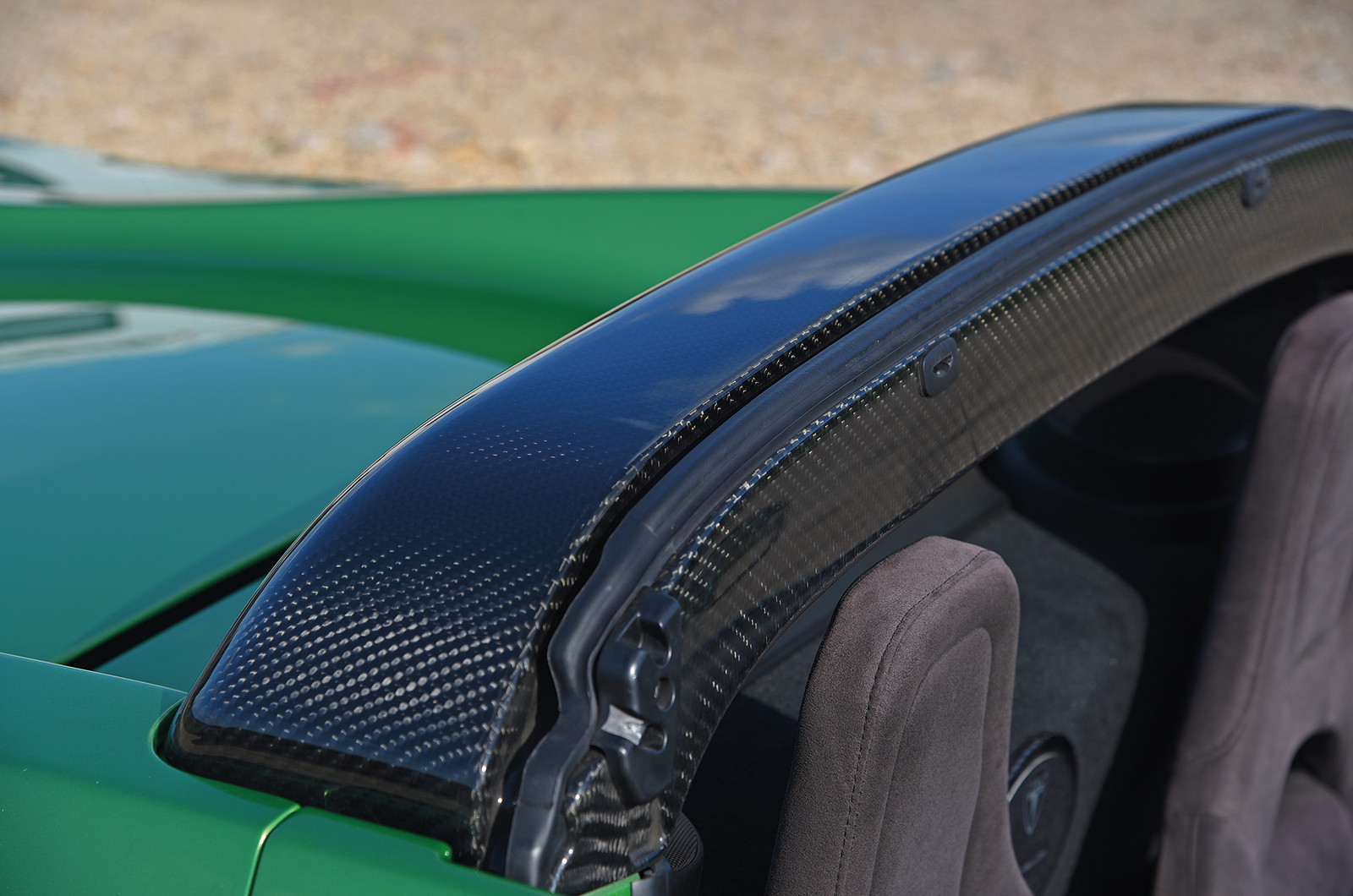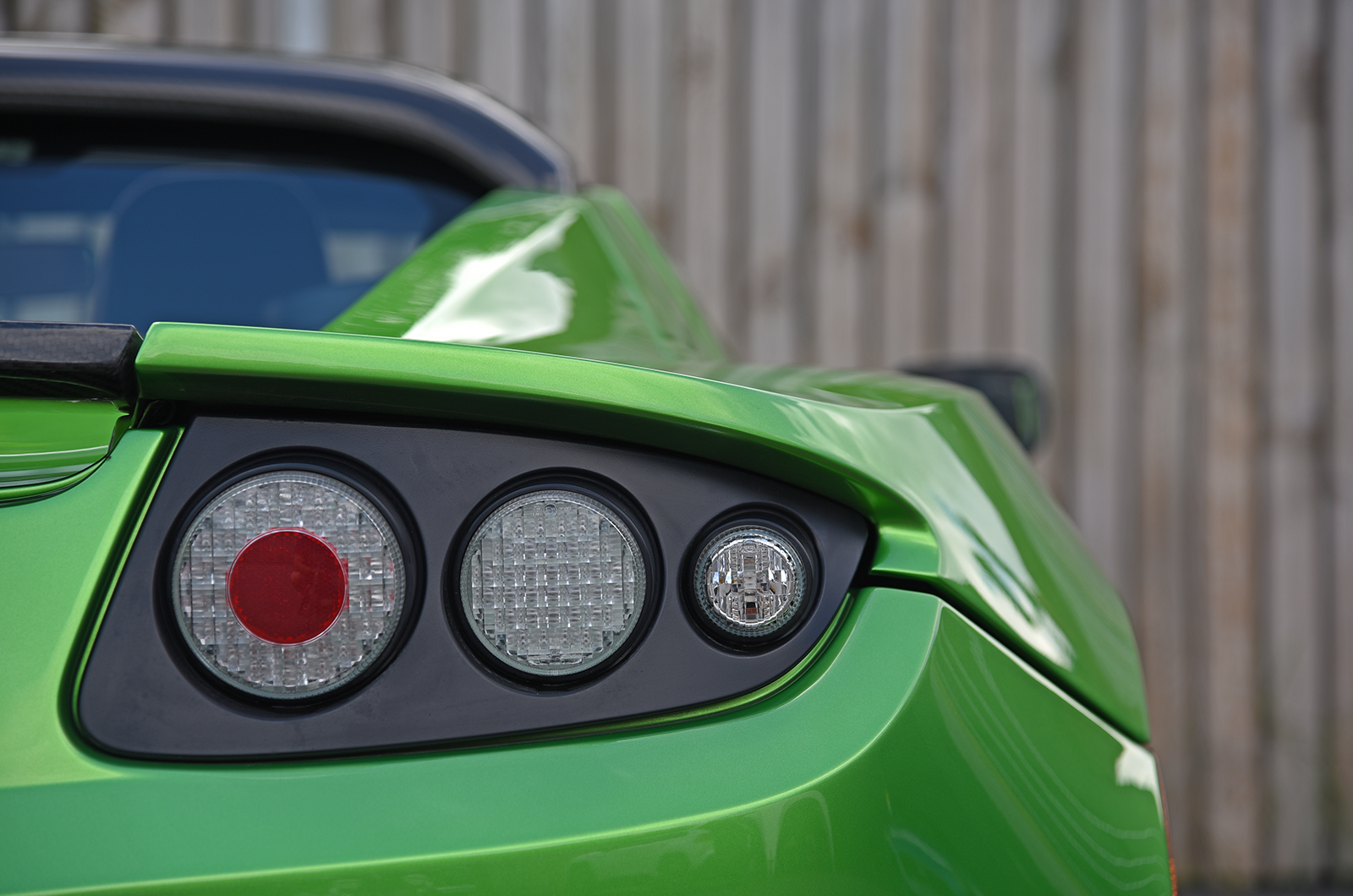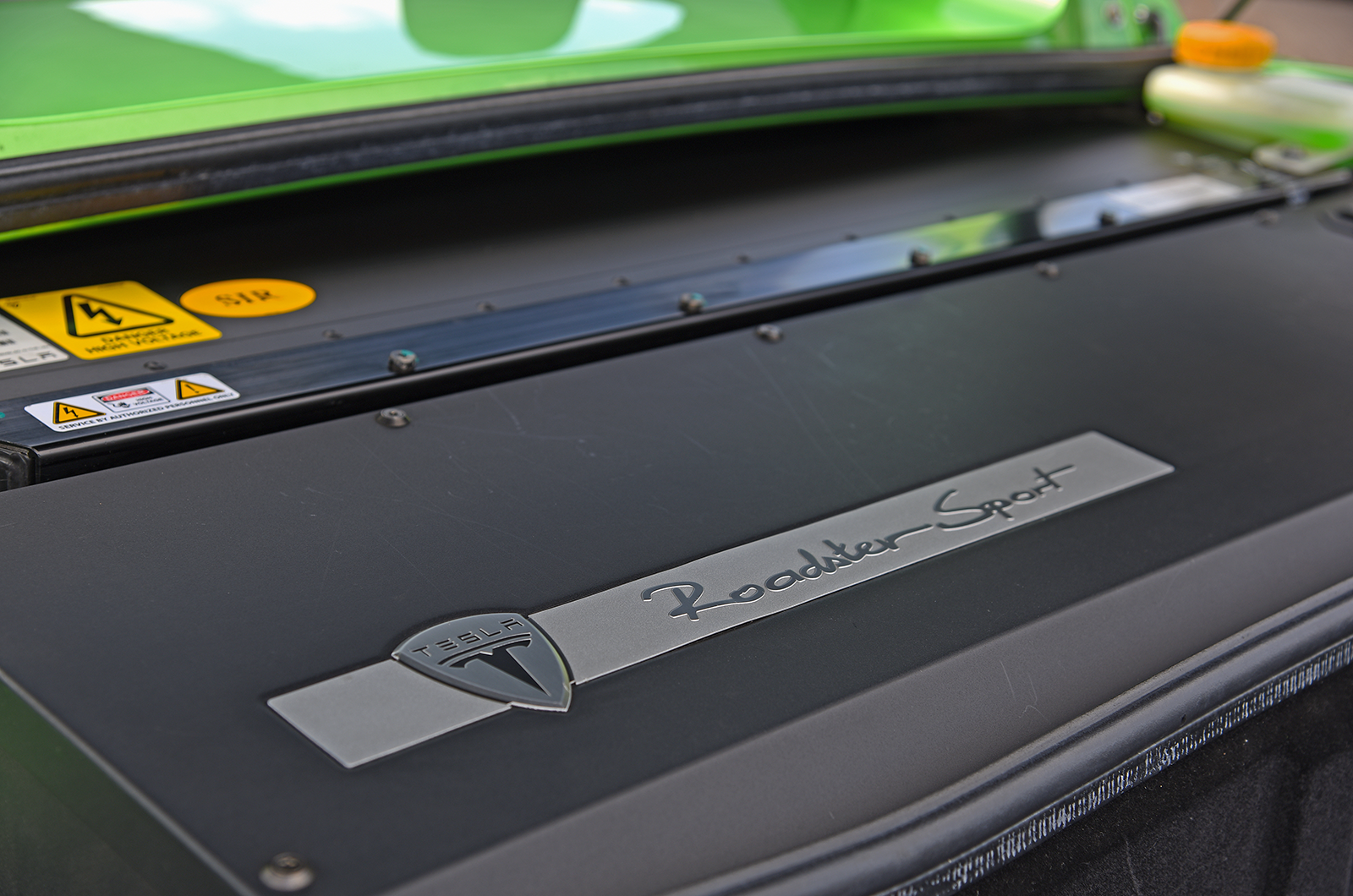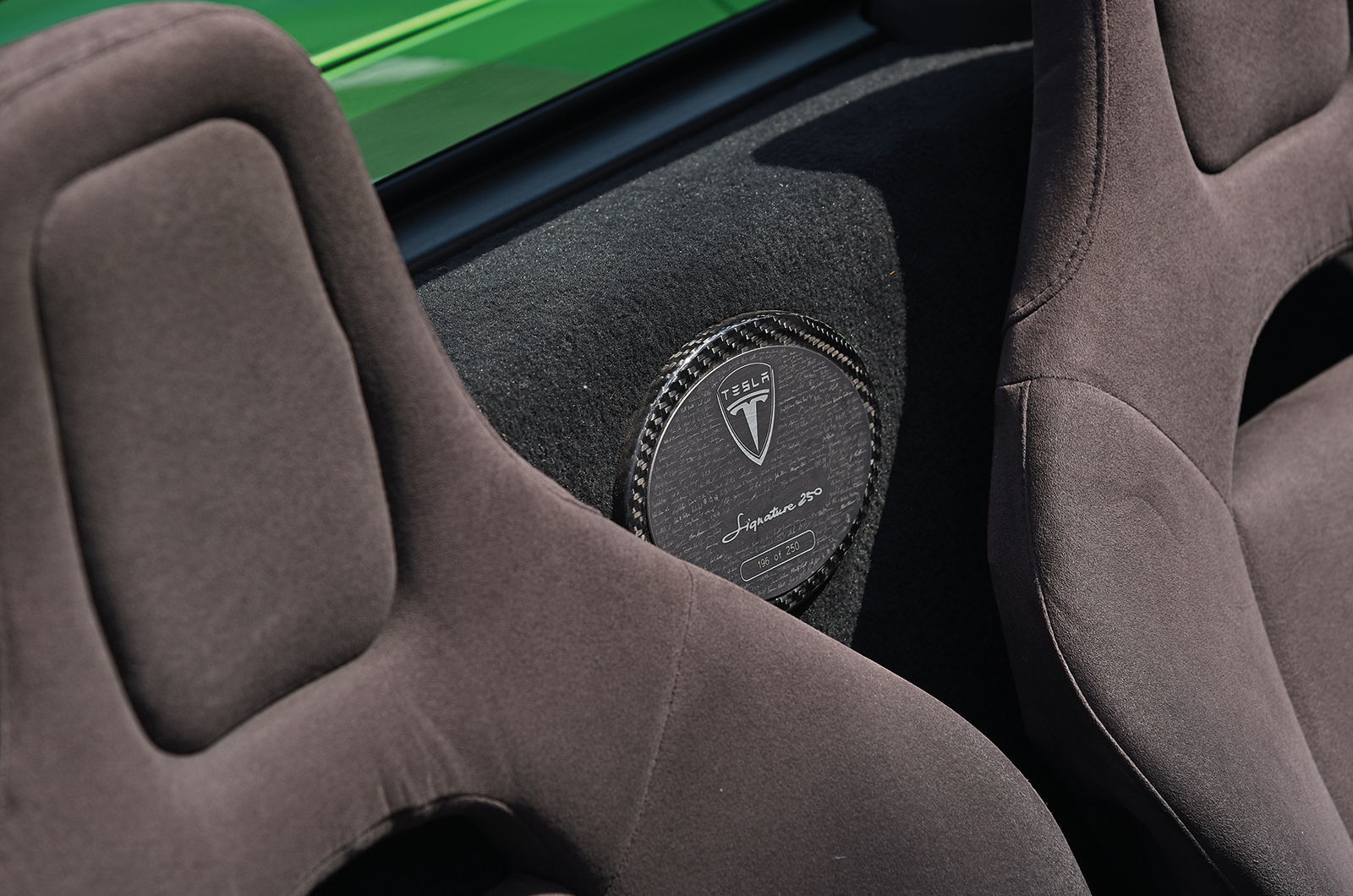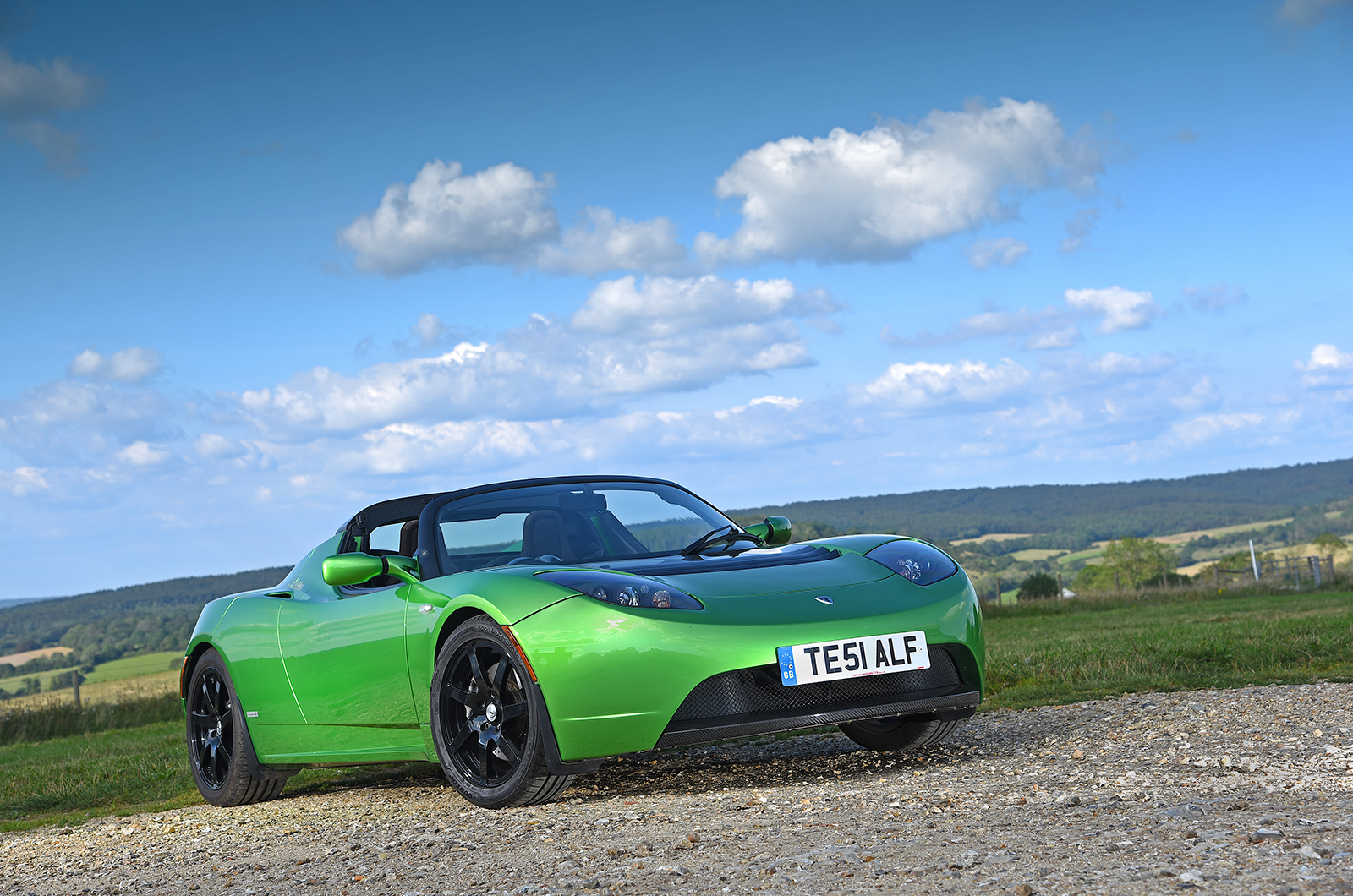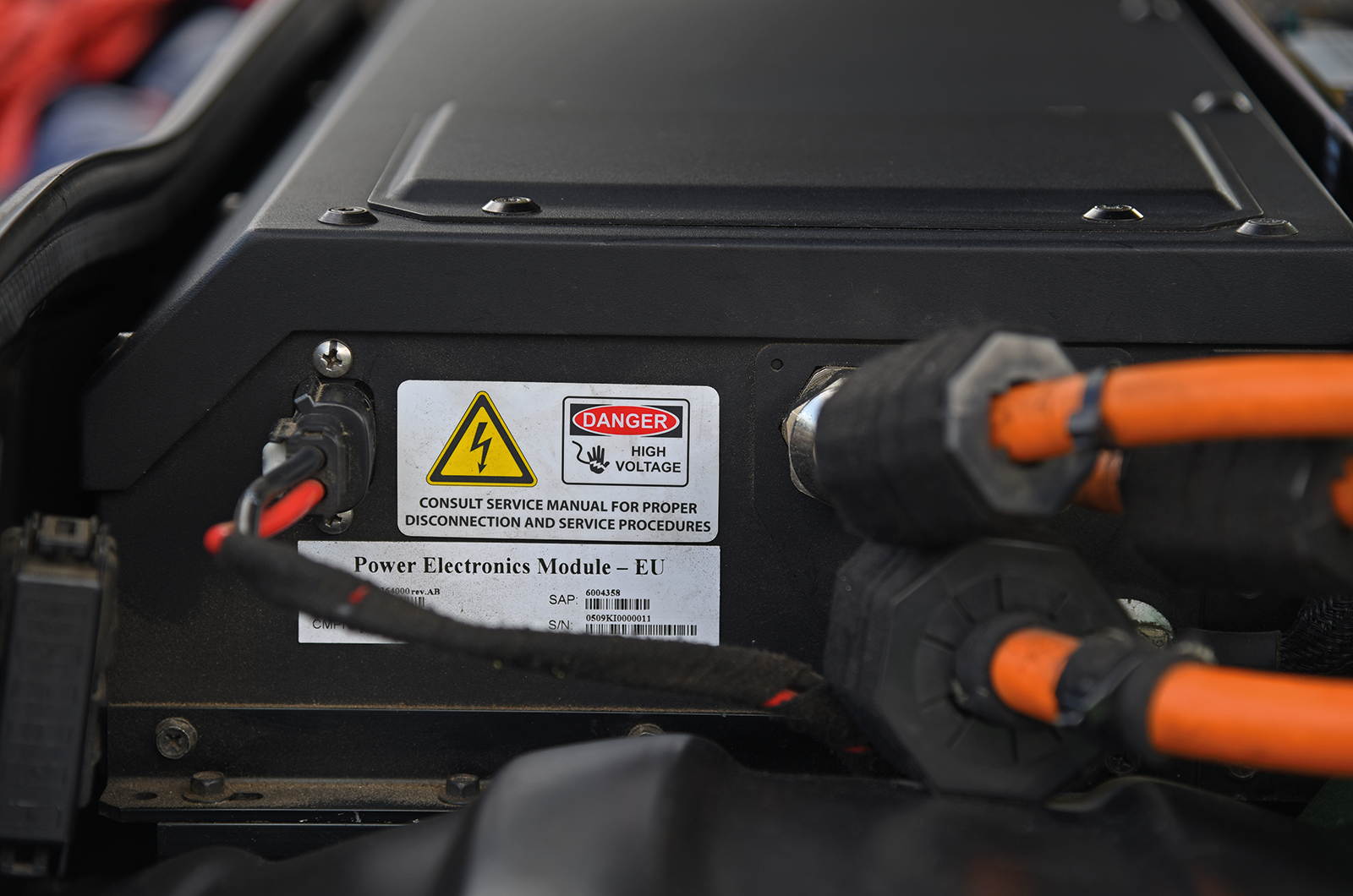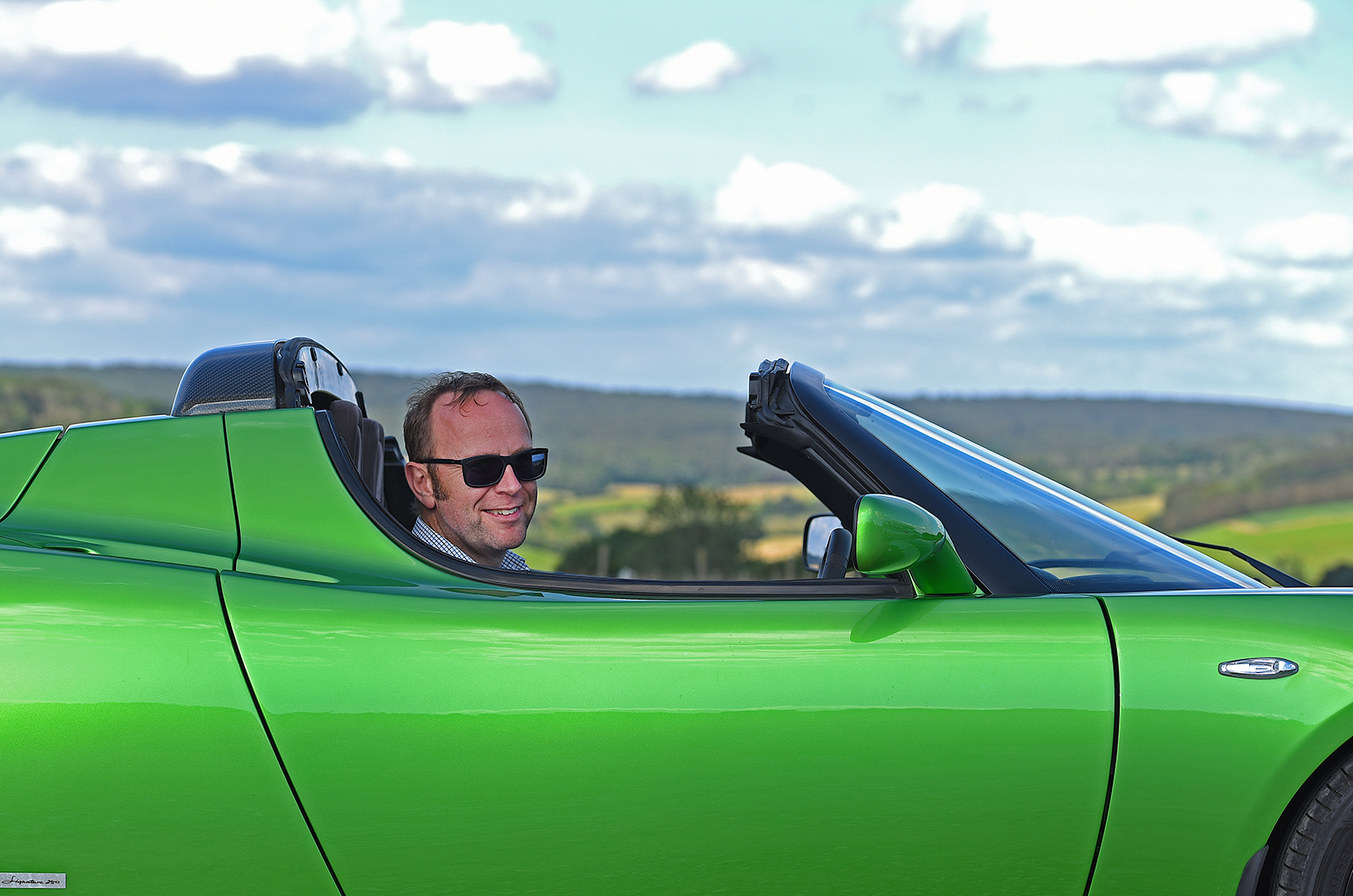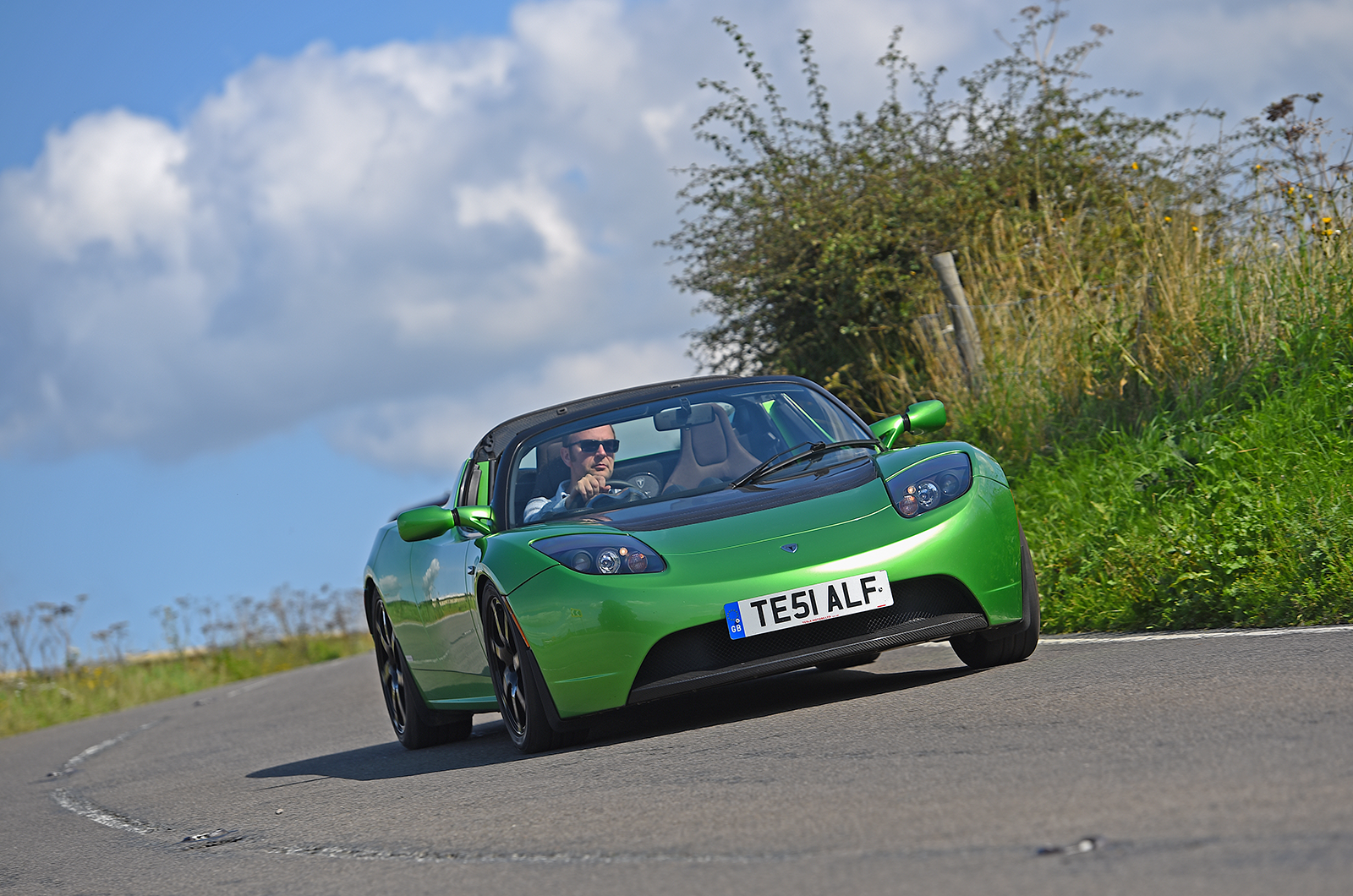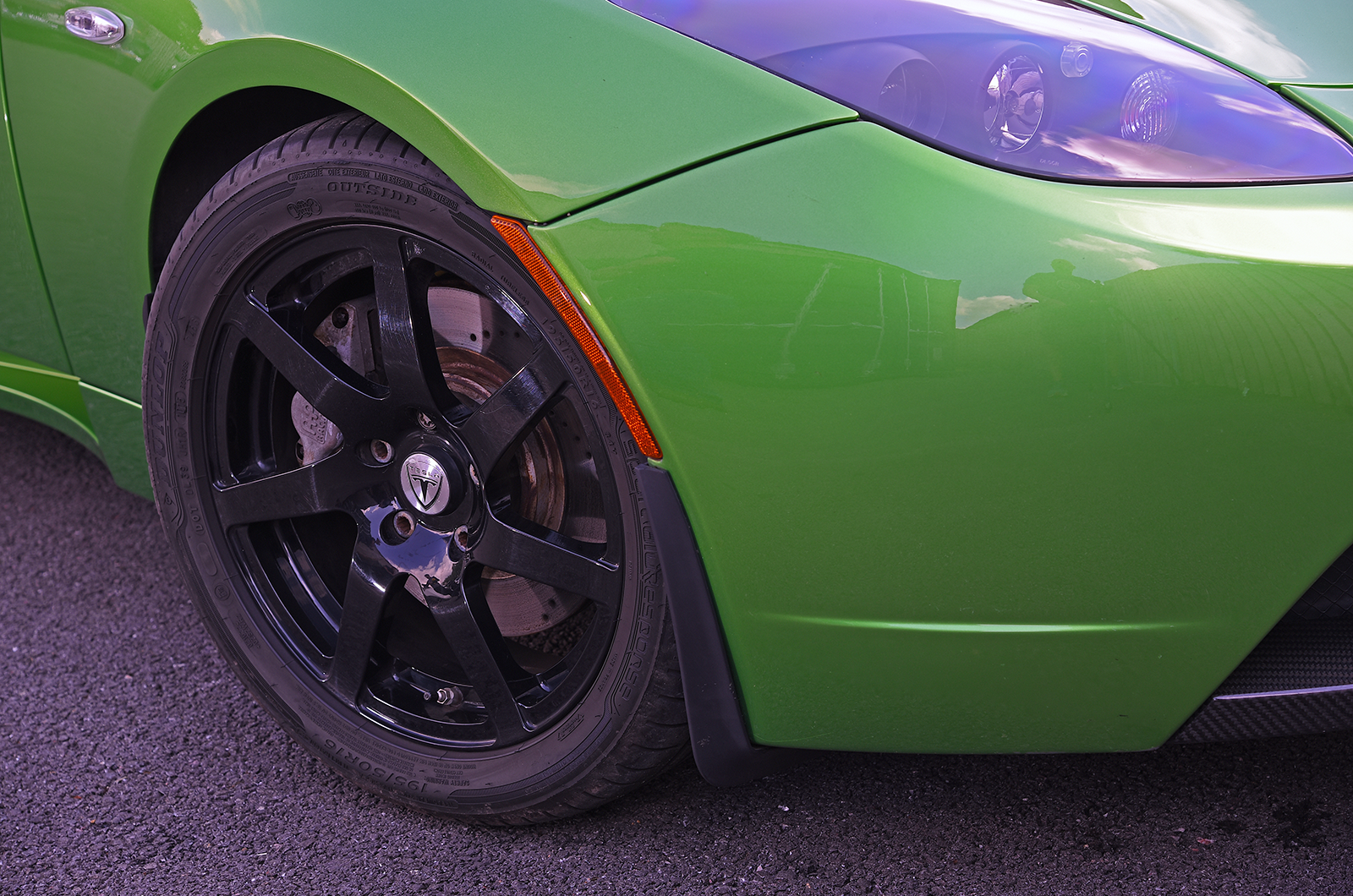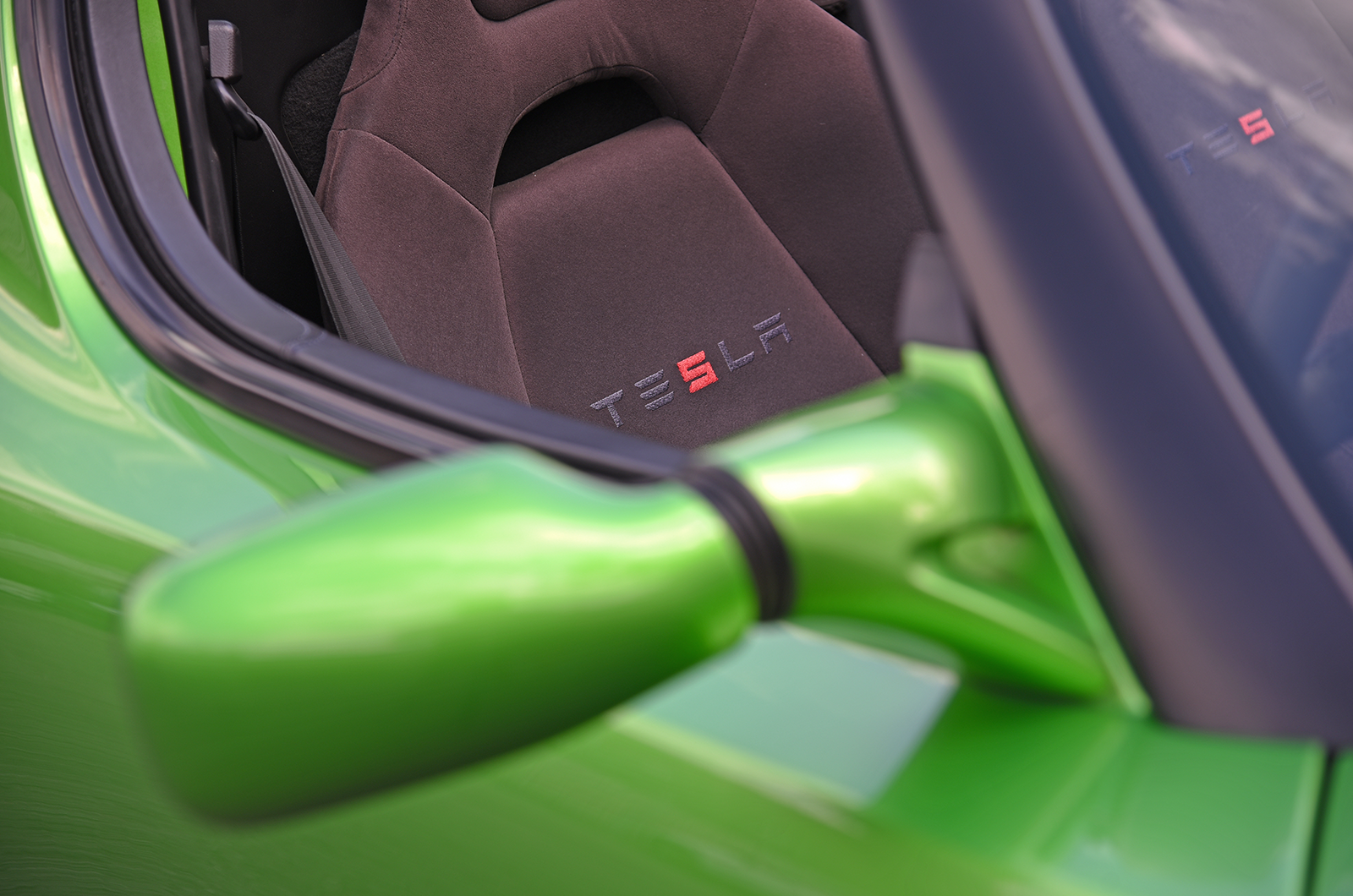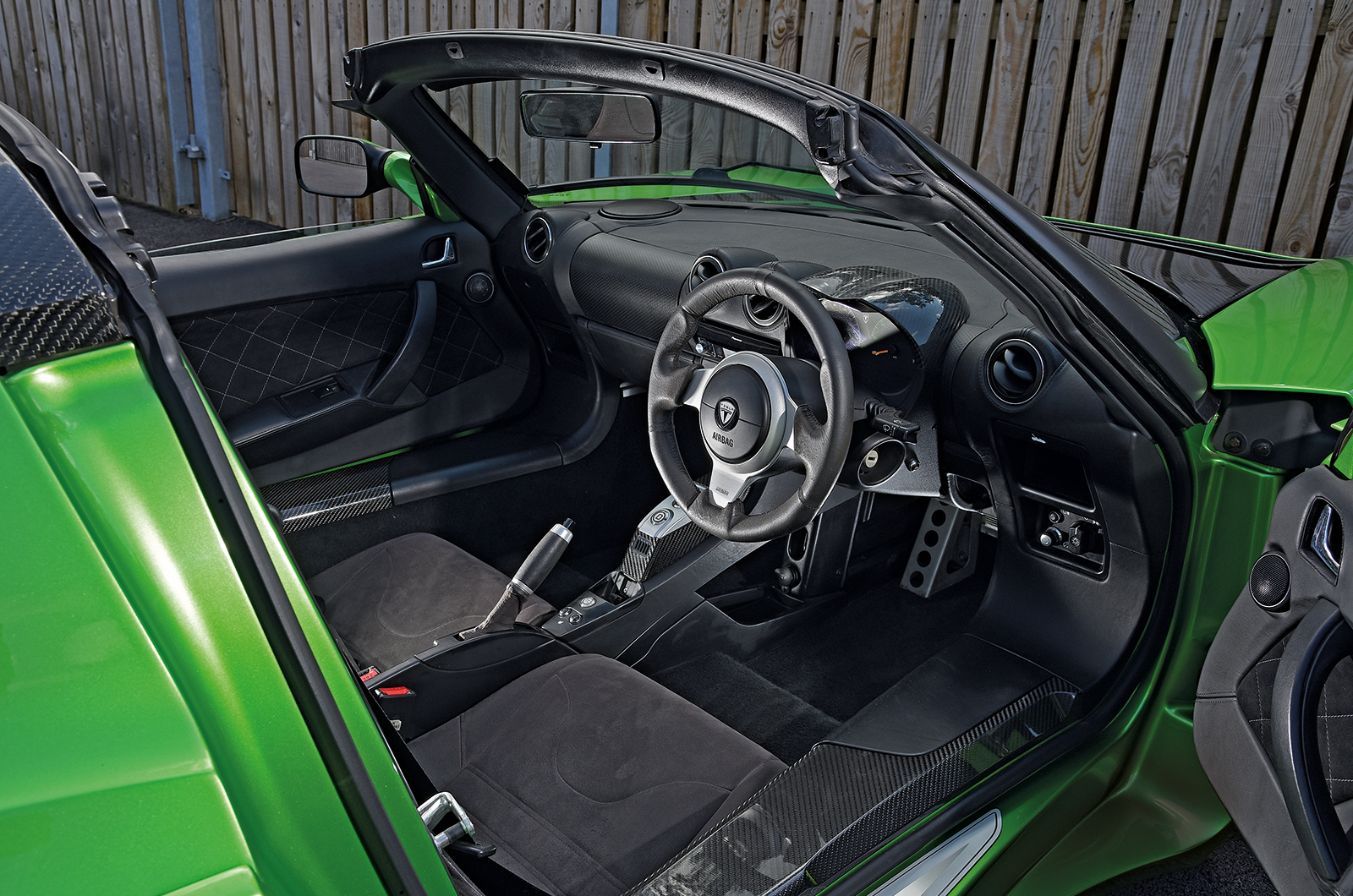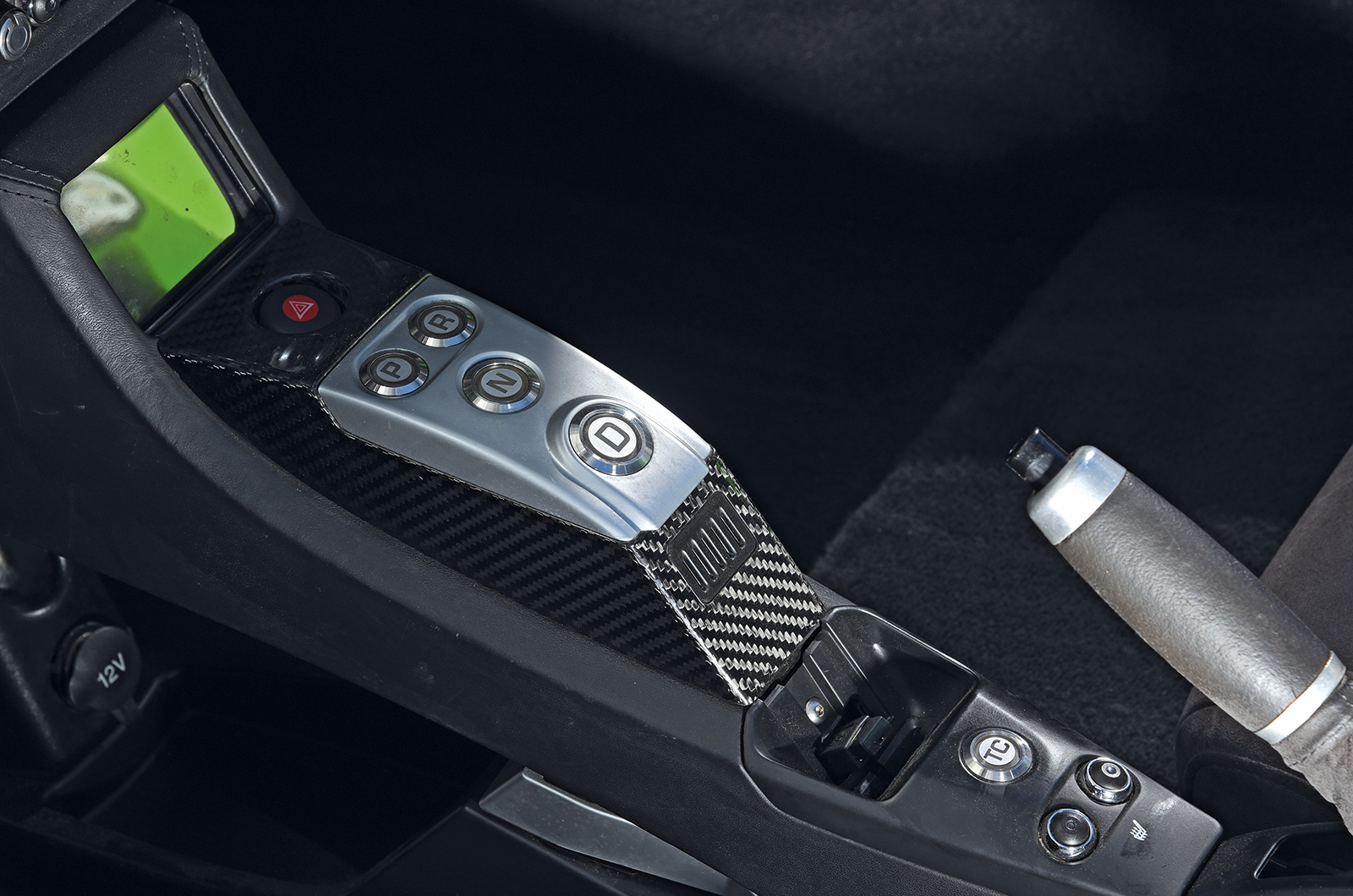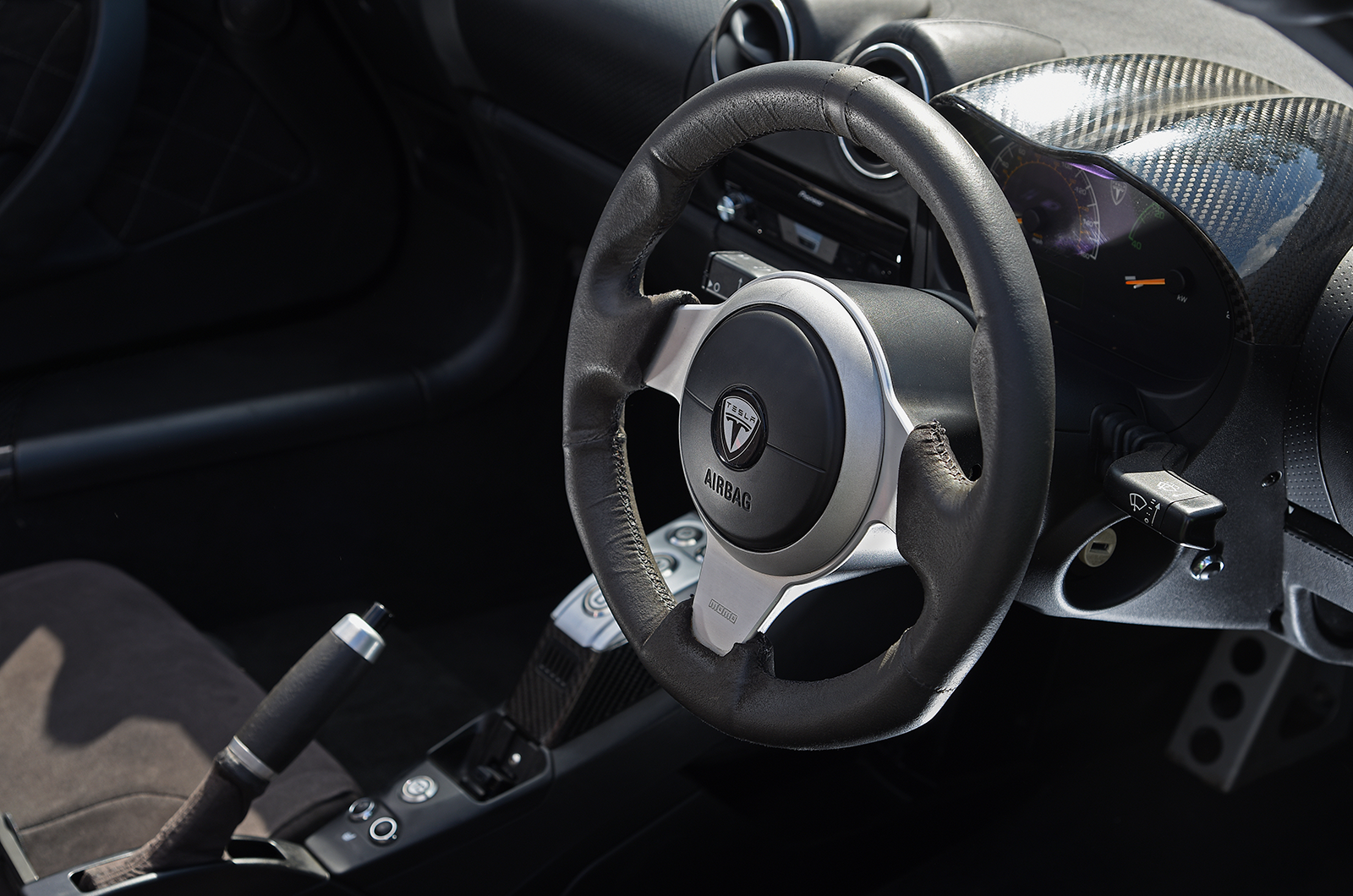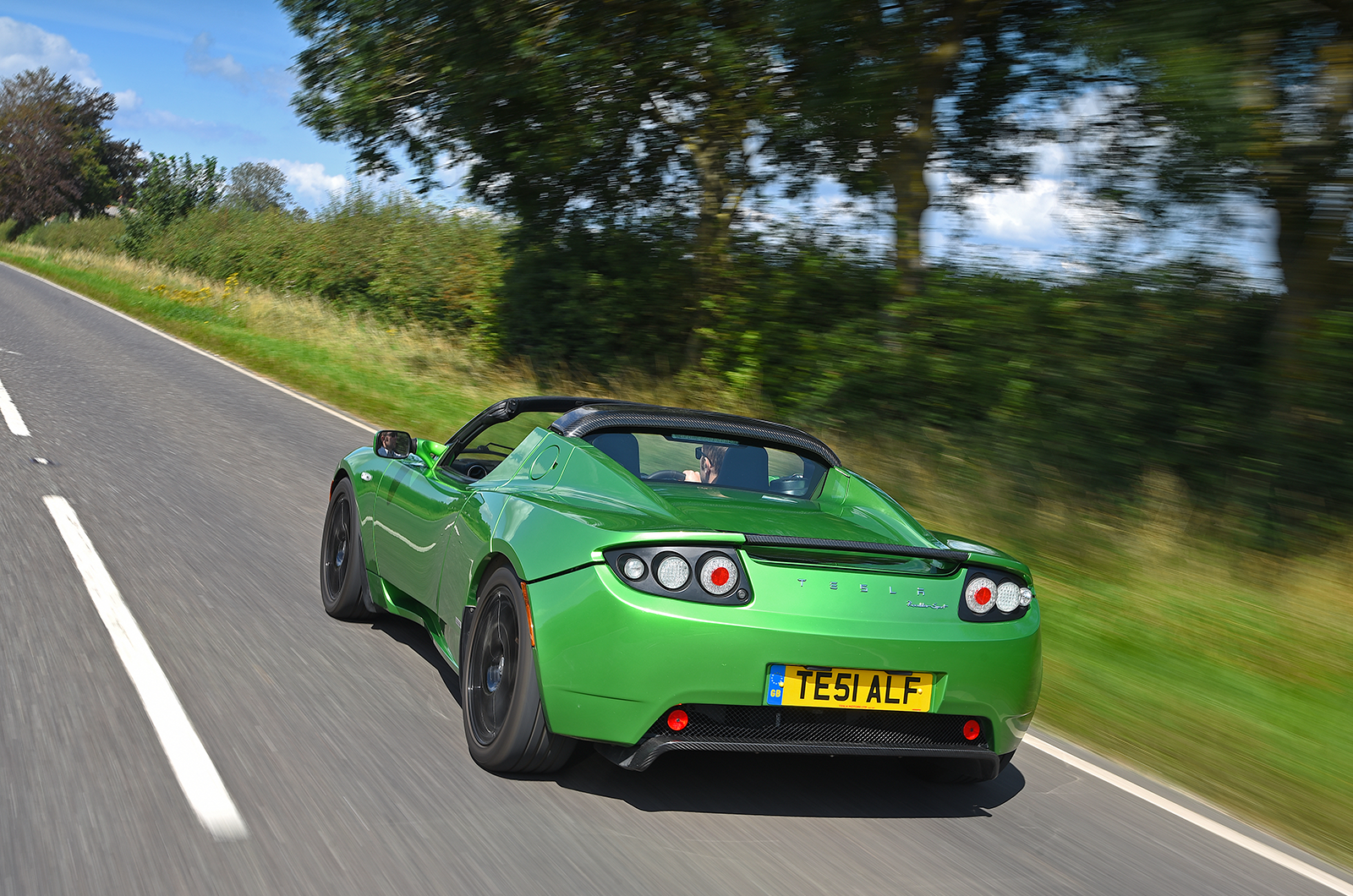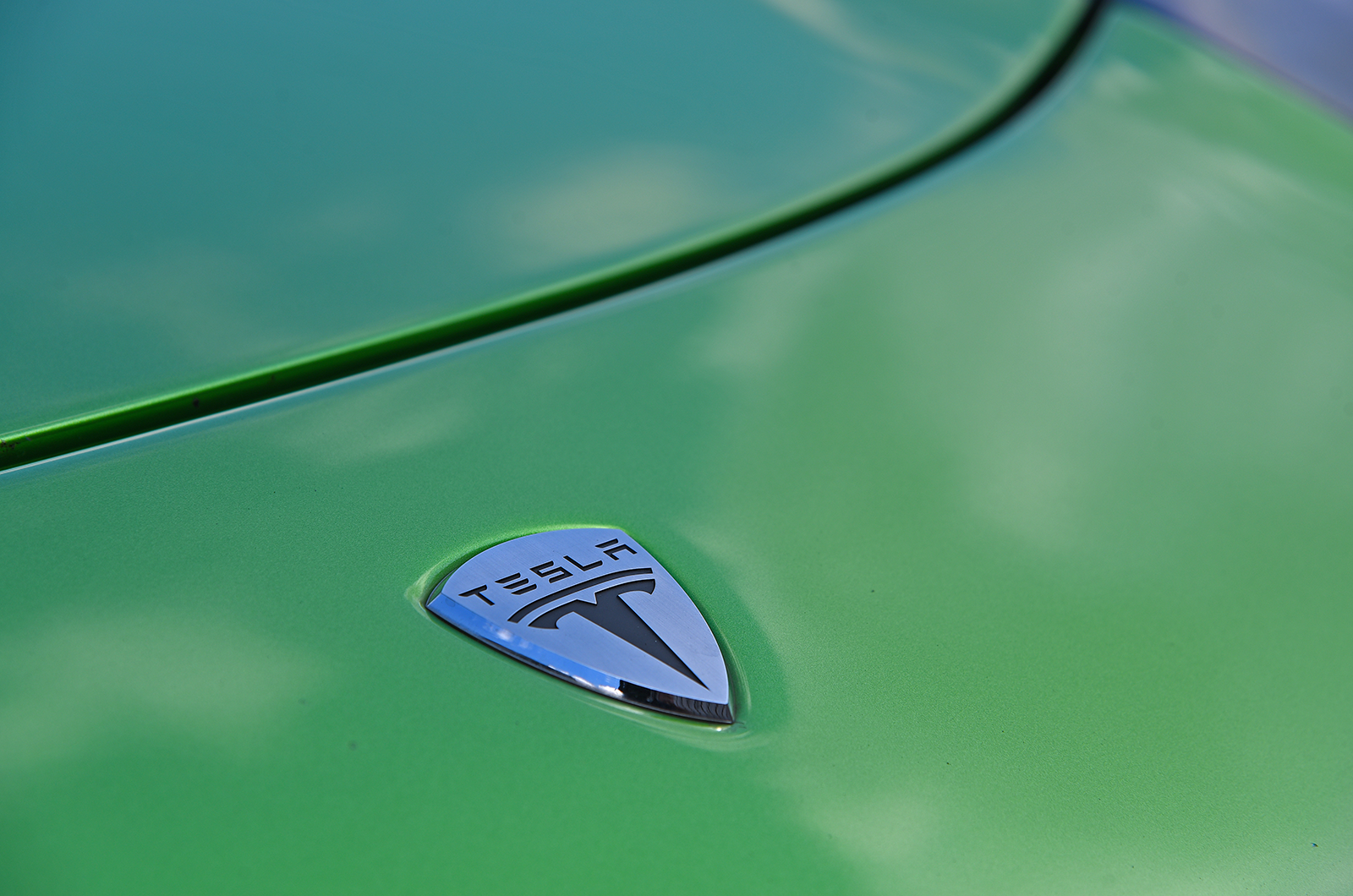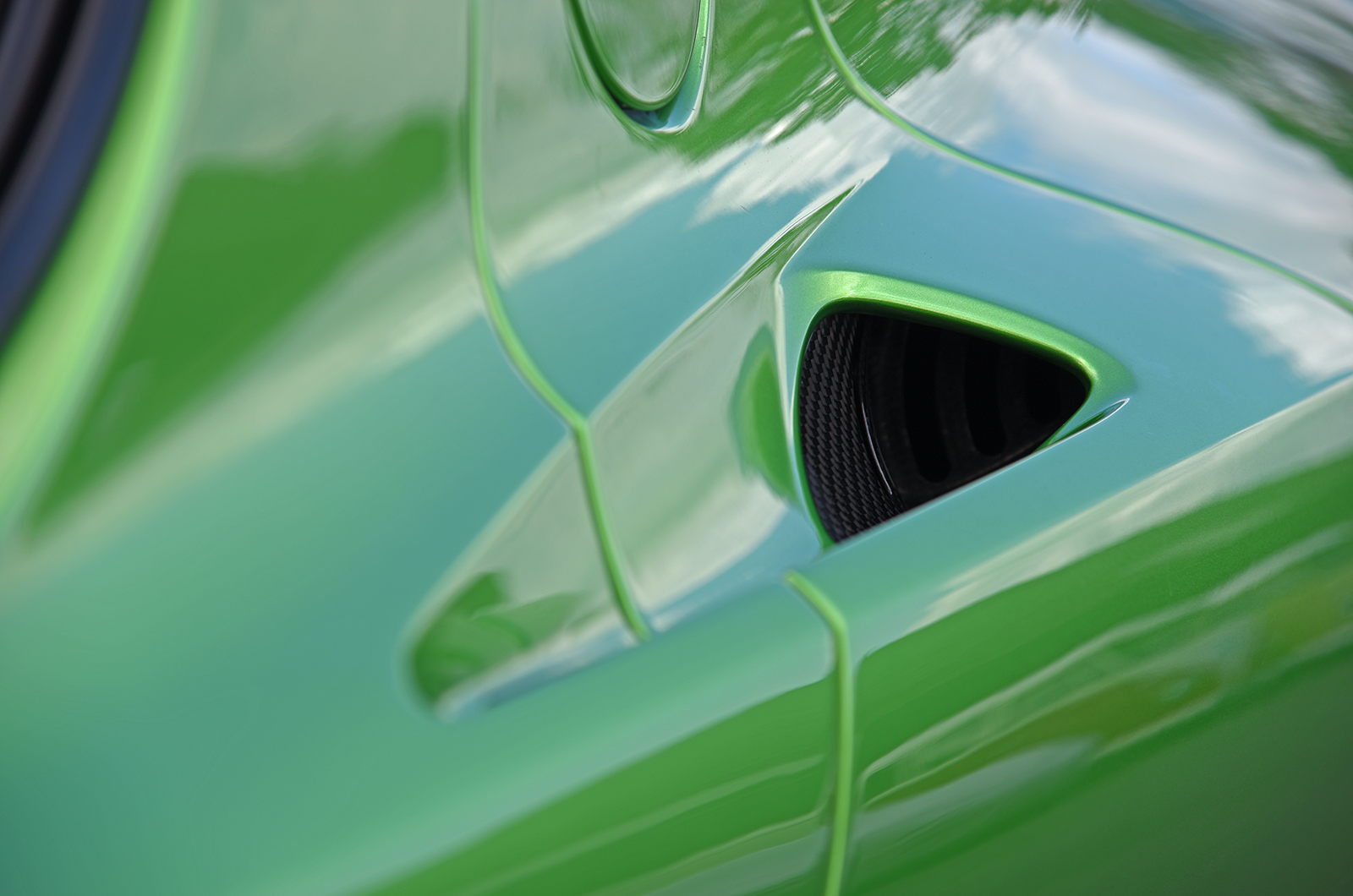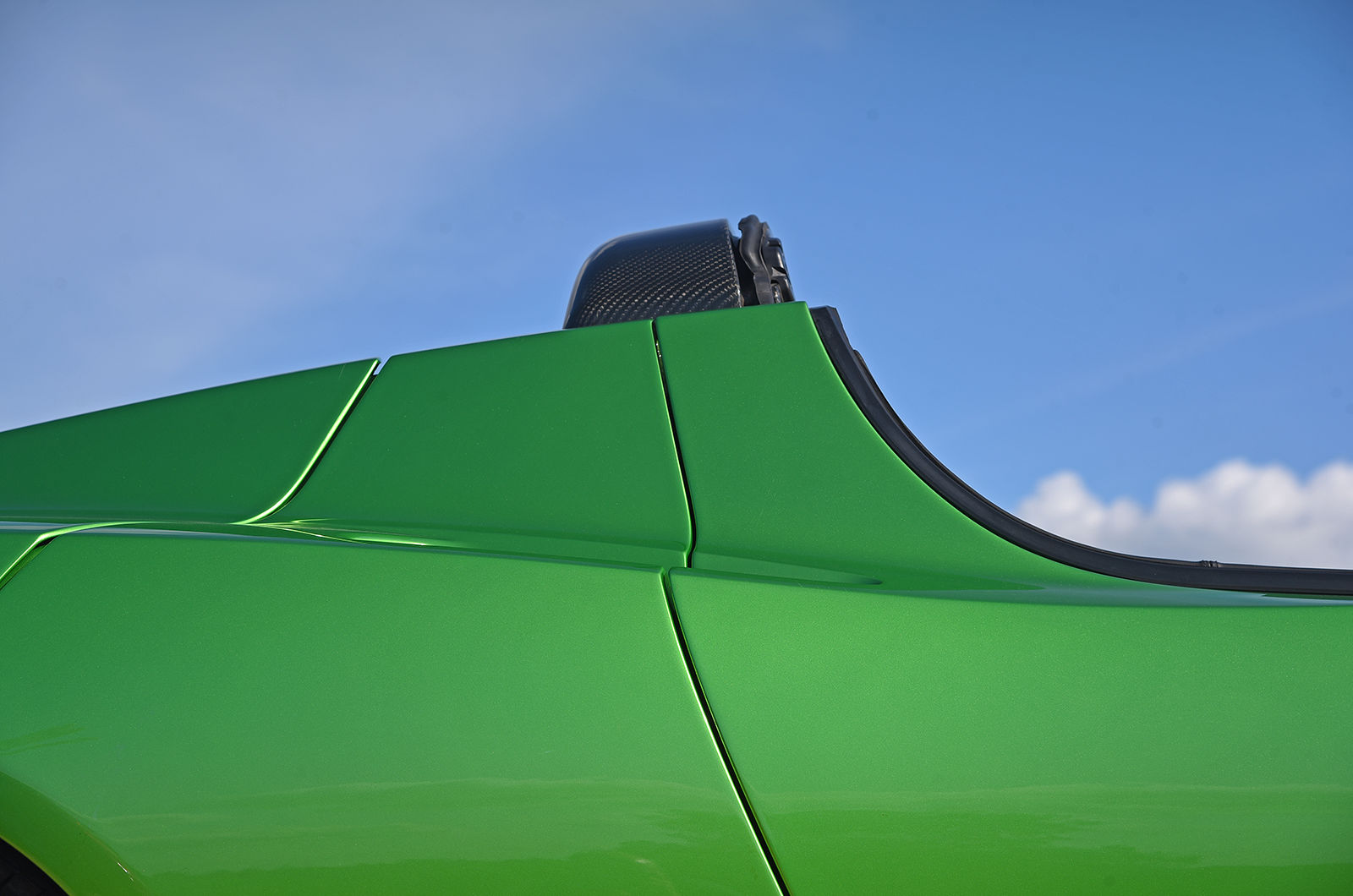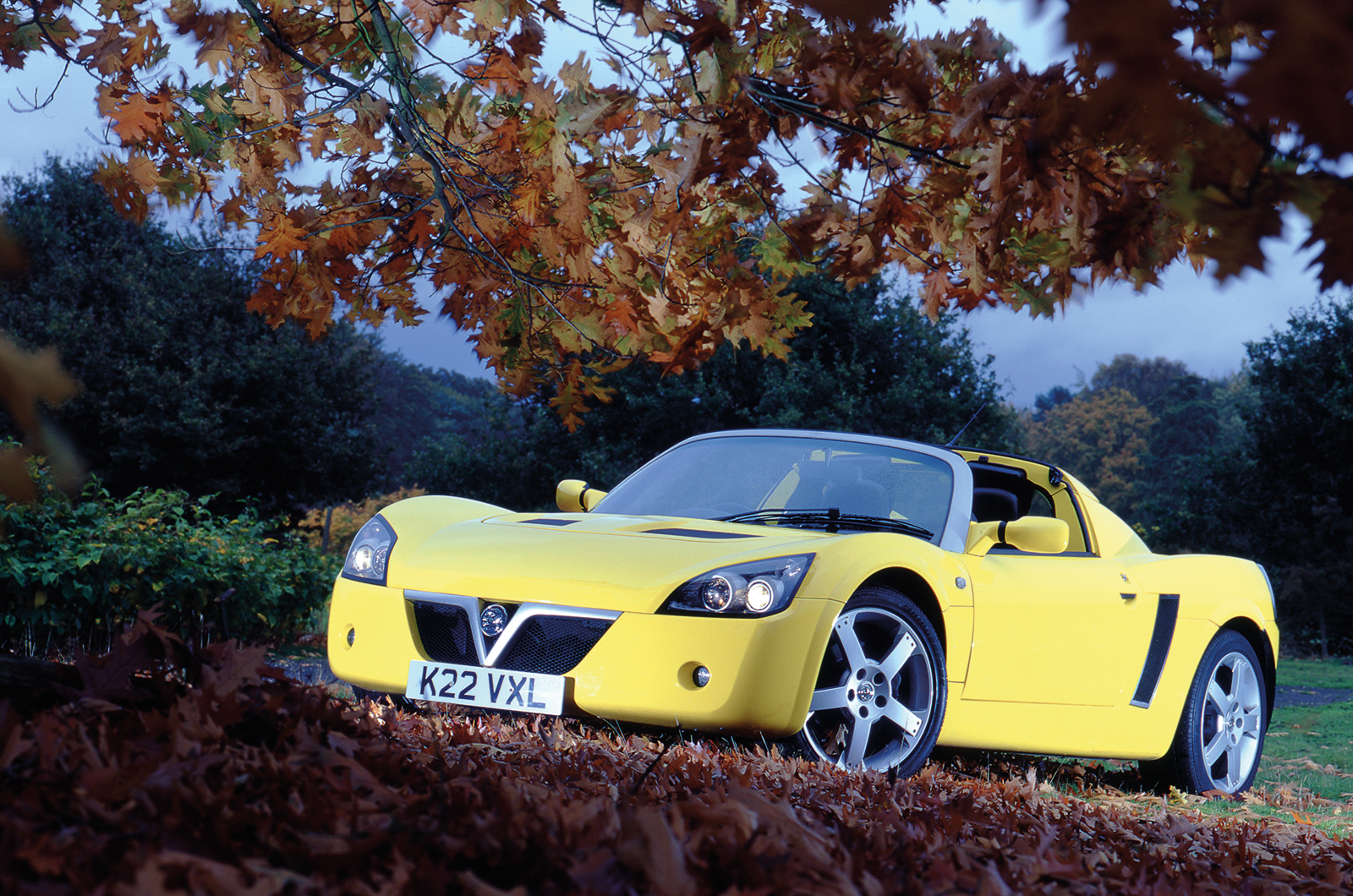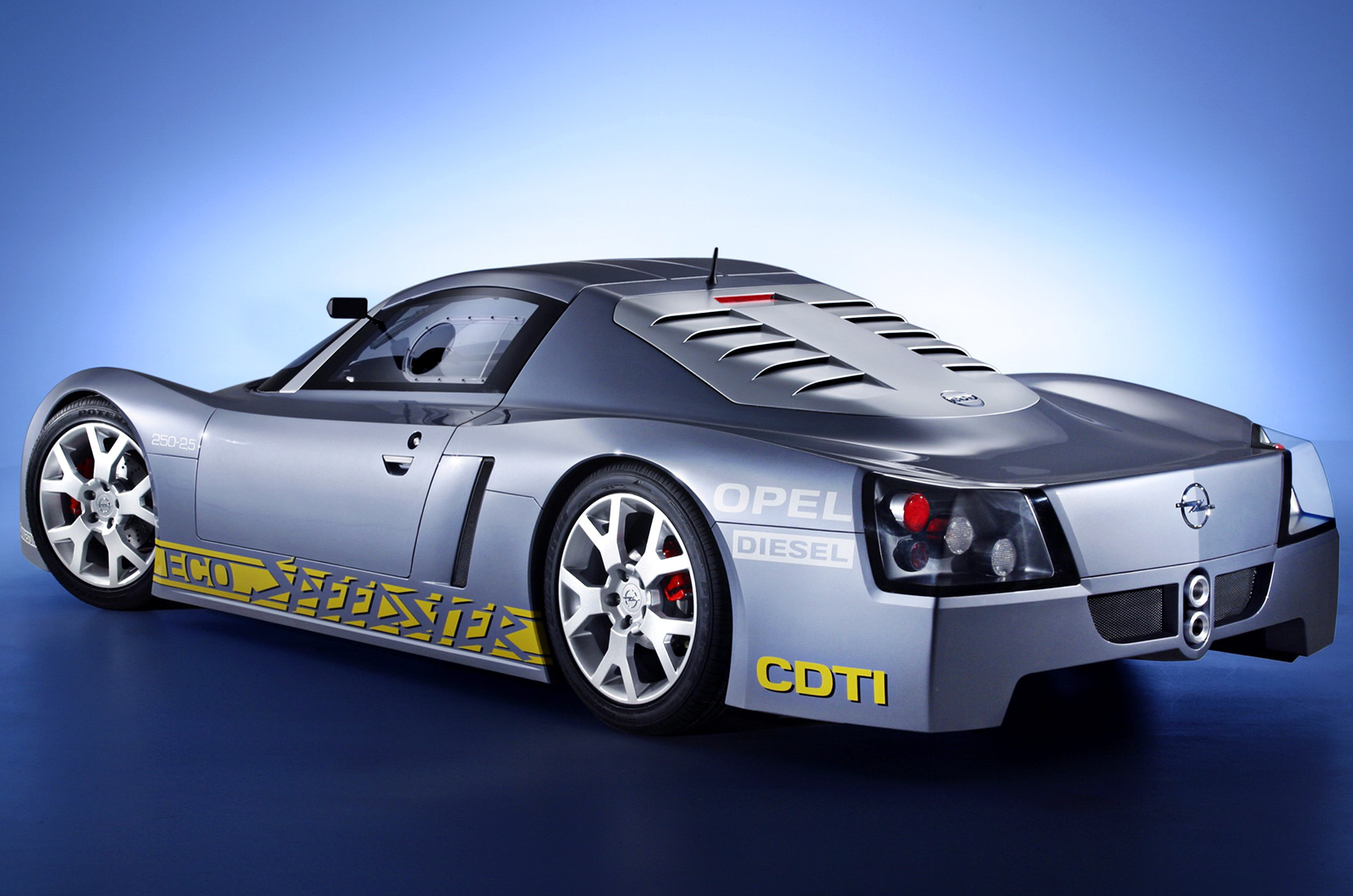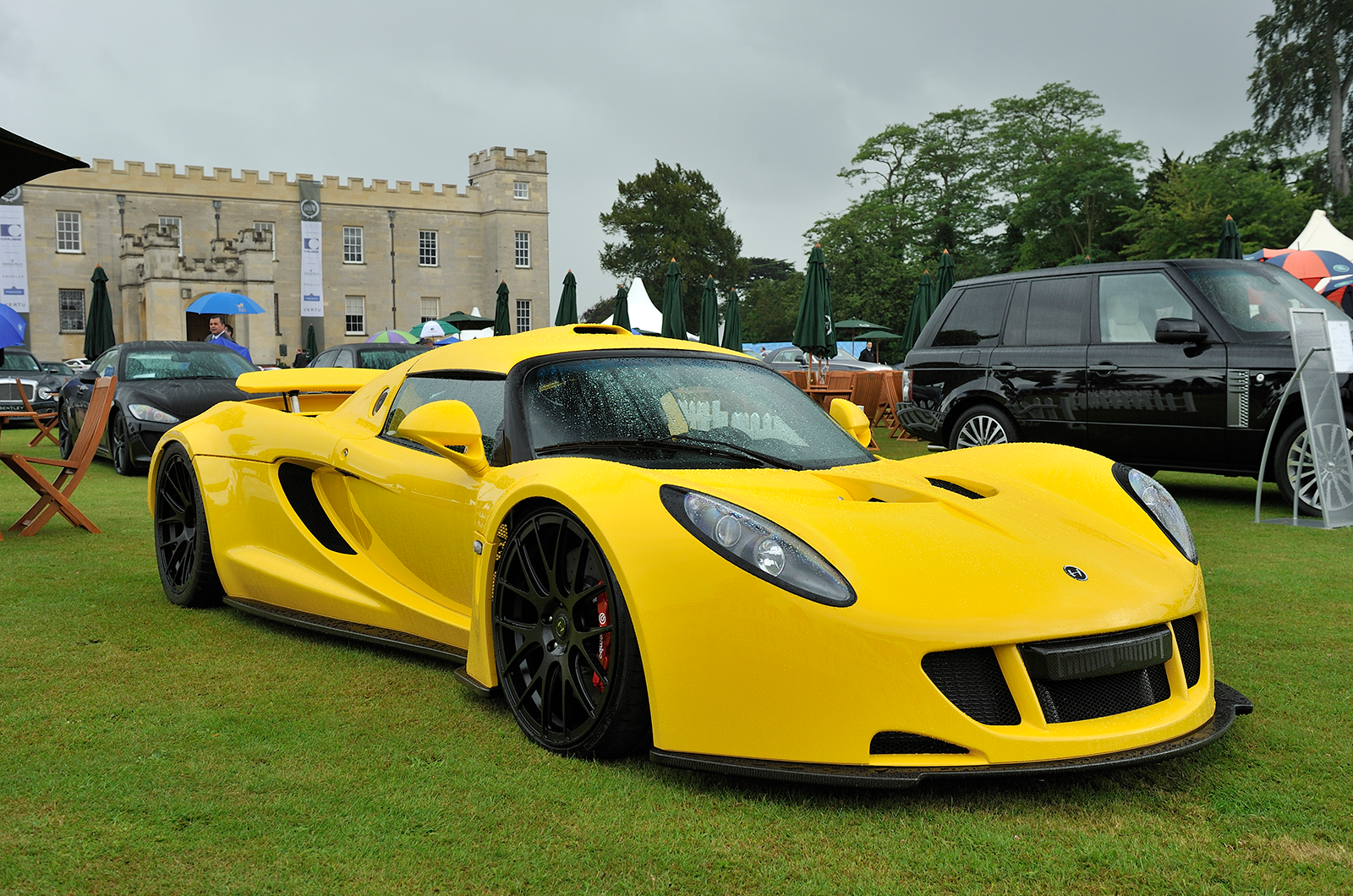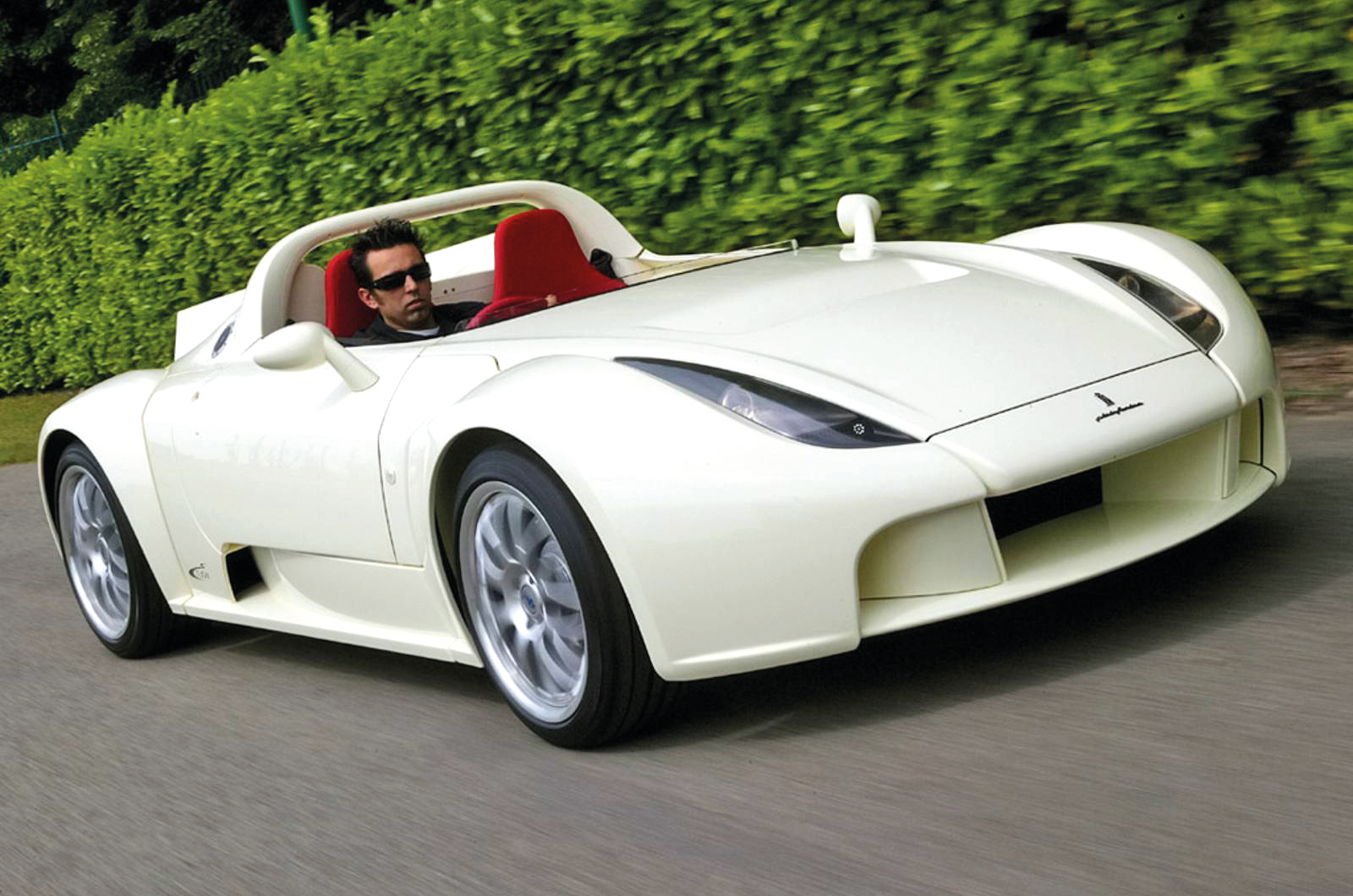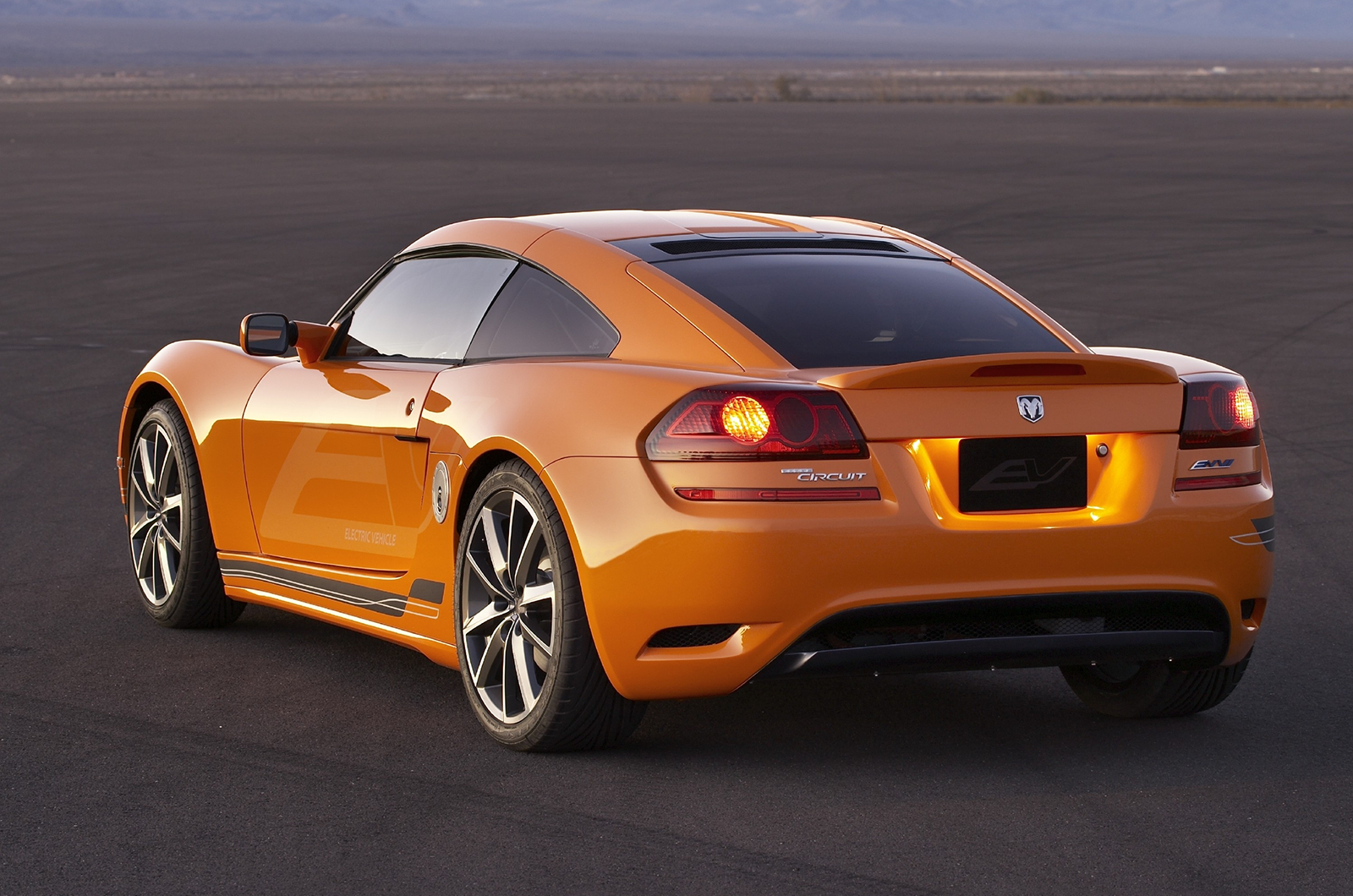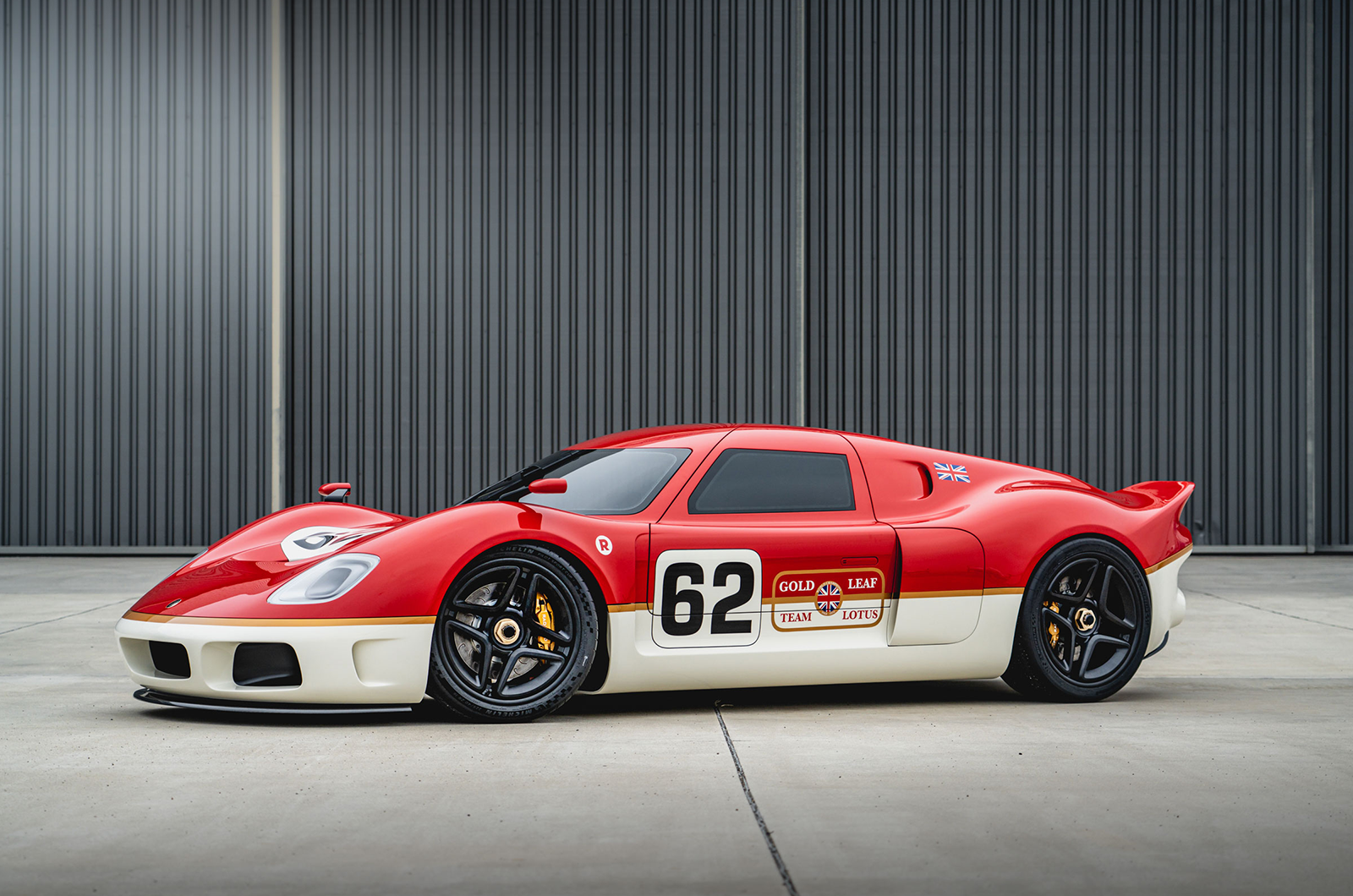Ferguson has found that enthusiasm for the model is growing, and finds it easy to live with.
“The owners are great. If I have a problem then everyone will share information and try to help.
“The battery shouldn’t go tonto if you’re paying attention, and if you’re not paying attention this probably isn’t the car for you.
“I’ve downloaded an app to monitor it even when I’m away.”
The Tesla may seem futuristic in places, but its interior is something much more familiar
An app to look after your classic?
It’s all sounding a bit virtual reality for my liking… Yet step aboard and the Tesla feels pleasingly analogue.
The cabin makes a decent fist of concealing its roots – where an Elise celebrates its extruded aluminium chassis, you’ll struggle to glimpse it beneath the leather and carpeting of the Tesla – but it’s still simple and feels spacious and comfortable.
Clockwise from top: the optional Alcantara adds to a plush, more spacious cabin than the Lotus but the steering wheel, vents and wide sills are familiar; buttons control the single-speed transmission; the screen was later moved to the dash
The seats are wider, and heated because that uses less energy than a conventional heater blower.
There’s even a cupholder, electric windows, a glovebox and a bigger boot than you’ll find in any Elise – when you’ve thousands of batteries behind you, saving the last few grams becomes a bit less important.
A central touchscreen helps you monitor the state of the batteries, and ahead of the Momo wheel instead of a rev counter there’s a gauge recording power usage, from +40kW when recovering energy under braking to -200kW at full throttle.
The Roadster’s performance may take you by surprise
Turn on, press ‘D’ for Drive, deploy all of that energy and, even if you expected it to be quick, the Roadster is still, if you’ll pardon the pun, electrifying.
You can hear your own sharp intake of breath over the eerie sound of gathering wind and road roar accompanied by little more than a whistle from the motor as 60 passes in 3.7 secs, 100mph in 11.1.
There isn’t even a gearchange to interrupt the flow: the two-speed ’box of the early cars soon made way for a single-speed Borg-Warner unit to cope with the torque.
The Roadster’s steering is very communicative
“It doesn’t make a V8 rumble,” says Ferguson, “but floor it and there is an angry noise behind. It gives you a sense something big and important is happening. It’s not a silent experience.”
Just as associations with the Elise are beginning to fade, you arrive at a corner and the memories come flooding back.
The tactile little wheel writhes in your hands, sending messages from the slender 195/50 R16 front tyres direct to your brain as the car dives in with the puppy-like eagerness that makes the Lotus such an amiable companion.
The Tesla Roadster’s longer tail results in a bigger boot than an Elise
Tesla – and indeed its owners – may want to distance the Roadster from the comparatively lowly Elise, yet it is the DNA of its donor that prevents the Roadster from feeling like an arcade game made real.
It encourages you to exploit that pace for more than just the cheap thrill of acceleration.
It’s not exactly the same, mind. Behind you there are 11 sheets of lithium-ion cells, 6831 of them, weighing 450kg.
Tesla’s Roadster is the first true electric classic of the modern era
That means a total some 40% heftier than a contemporary Elise, and you’re instantly aware of that sense of mass, particularly under braking when you start to realise why four-piston calipers are a popular upgrade.
In bends you can feel the mass shifting, pushing you through, but on the flipside there is far more sophistication to the ride.
Crashes and rattles are reduced, and the Tesla is quieter and more supple over bumps than even its revered petrol sibling – despite the manually adjustable suspension on this car being at its hardest setting.
Tesla also demonstrates that an electric future can still be an exhilarating one for enthusiasts
For all its futuristic feel, the Tesla is in many ways an anachronism. Like the original iPhone, launched six months after the Roadster, much of its technology is already obsolete.
Yet it has an importance all of its own: it marks a moment in time, a changing of the guard. More than being the jumping-off point for a new wave, it also offers hope.
It proves that while electrification may not replace internal combustion in our hearts, it can still give the next generation of classic fans something to lust after.
Images: Will Williams
Thanks to Drew Wheeler Sports & Classics
Elises by another name
Lotus produced endless convoluted developments of the Elise in-house, from the 340R and 2-Eleven track-day specials to the Sport Elise racer and its road going Exige twin, the more luxurious Europa S and even a stretched, V8-powered GT1 Le Mans car.
But Tesla wasn’t the only outside innovator to see the potential of its versatile tub.
Here are seven variations on the theme.
Vauxhall VX220
The Vauxhall VX220 was derived from the Opel Speedster
Announced in 1999 as the Opel Speedster, the Martin Smith-designed Vauxhall VX220 was the most prolific Hethel spin-off: 5184 cars had 2.2-litre 145bhp Astra power, plus 941 from 2003 with a 197bhp 2-litre turbo.
Tuned for safer handling and comfort, it was torquier and more civilised but less exciting than the Elise (apart from the 60 run-out 217bhp VXRs).
Opel Eco-Speedster
There might not be many similarities to the naked eye, but the Eco-Speedster was born from an Elise-based tub
Longer, lower and 215kg lighter than a VX220, the Eco-Speedster still had an Elise-based tub under its low-drag carbonfibre skin with a Cd of just 0.20.
Previewed at the ’02 Paris Salon and powered by a 112bhp, 1248cc common-rail diesel, this gullwing-doored streamliner set 17 FIA World Speed Records and could hit 160mph yet returned up to 113mpg.
Hennessey Venom GT
The Hennessey Venom GT was very close to a Guinness World Record
With a 1244bhp 7-litre twin-turbo V8 bolted to the back of an Exige chassis, this wild Texan coupe hit 270.49mph down the runway at Cape Canaveral, Florida, in 2014.
Only a production run of 29, one shy of the number needed to qualify with arbitrator Guinness, stopped it becoming the world’s fastest production car.
Pininfarina Enjoy
The wings could be removed from Pininfarina’s Enjoy to create an open-wheeler
First seen in ’03 with a 135bhp K-series in an Elise chassis, this spectacular roadster had removable wings to create an open-wheeled track car, with race-style pushrod suspension.
It was reworked a year later with Toyota power and conventional wishbones, and was slated for limited production but a £60-80k price ensured it remained a one-off.
Dodge Circuit EV
The Dodge Circuit EV was scrapped after just one prototype
Another electric vehicle, this time borrowing the stretched chassis (and thinly disguised body) of the Lotus Europa S.
Unveiled at the Detroit show in ’09, the Dodge Circuit EV featured a 265bhp electric motor and a lithium-ion battery pack, giving a 120mph maximum and a 150-200-mile range.
Although a working prototype was completed, the project was soon dropped.
Radford Type 62-2
The Radford Type 62-2 is available in Gold Leaf and JPS Lotus colours
Even as Elise production ends, new derivatives continue to appear.
The reborn Radford brand, backed by Ant Anstead and Jenson Button, will build just 62 carbonfibre coupés inspired by the Lotus Type 62 racer and sitting on an evolution of the Exige chassis.
It’s available in iconic Gold Leaf and JPS liveries, too, with 430-600bhp.
Rinspeed Squba
The weird and wonderful Rinspeed Squba is inspired by James Bond’s Lotus Esprit
Surely the maddest of all, this Swiss creation was inspired by The Spy Who Loved Me and went from the 2008 Geneva Salon to 10m below the surface as a sports-car-cum-mini submarine.
With three electric motors – one for road use, the others driving twin props – it could muster 120kph on land, 6kph on the water’s surface and 3kph beneath the waves.
Factfile
Tesla Roadster Sport
- Sold/number built 2008-’12/2450
- Construction riveted and bonded extruded aluminium chassis, carbonfibre body
- Engine three-phase, four-pole 400V AC induction electric motor
- Max power 288bhp @ 5-8000rpm
- Max torque 295lb ft @ 0-6000rpm
- Transmission single-speed, RWD
- Suspension independent, by double wishbones, coil springs, Bilstein monotube dampers, anti-roll bar f/r
- Steering rack and pinion
- Brakes ventilated discs, with servo and anti-lock
- Length 12ft 8in (3946mm)
- Width 6ft (1851mm)
- Height 3ft 8¼in (1126mm)
- Wheelbase 7ft 8½in (2351mm)
- Weight 2767lb (1255kg)
- 0-60mph 3.7 secs
- Top speed 130mph
- Range 244 miles
- Price new £102,895
- Price now £65-85,000*
*Prices correct at date of original publication
READ MORE
Elise at 25: farewell to a Lotus legend
15 times Lotus got it right
Buyer’s guide: Lotus Elise S1
Buyer’s guide: Vauxhall VX220
Alastair Clements
Alastair is Editor in Chief of Classic & Sports Car and has been associated with the brand for more than 20 years
